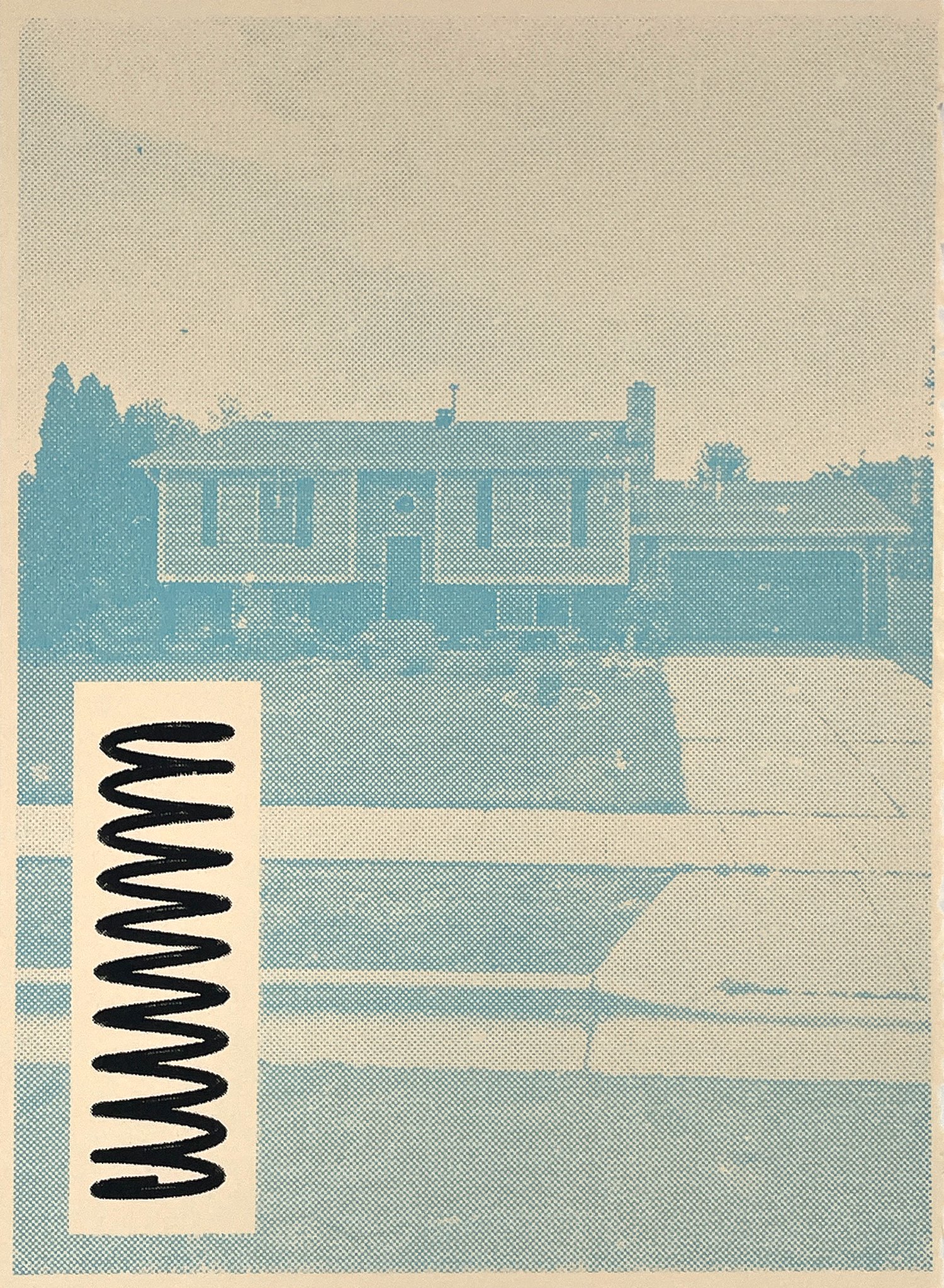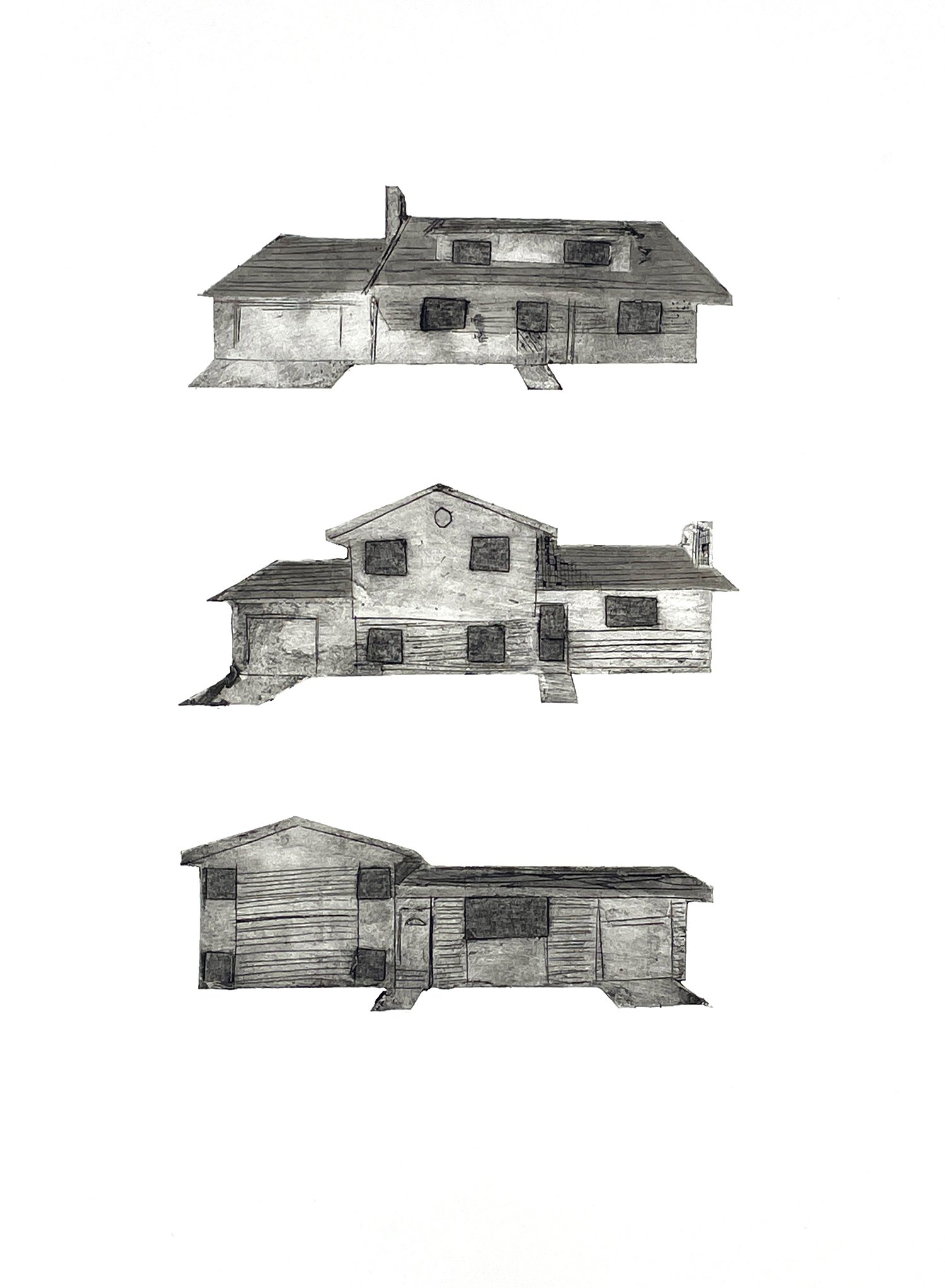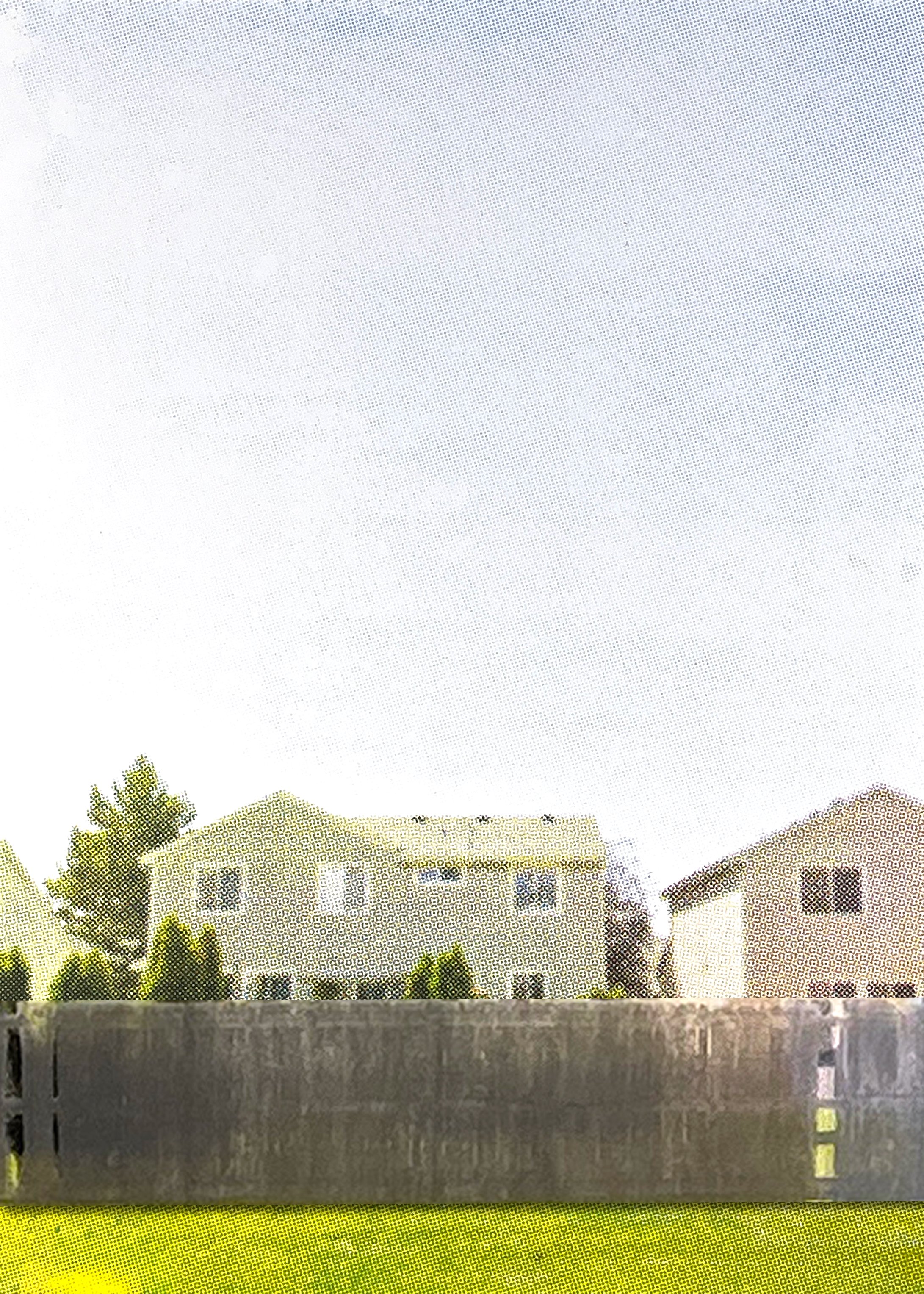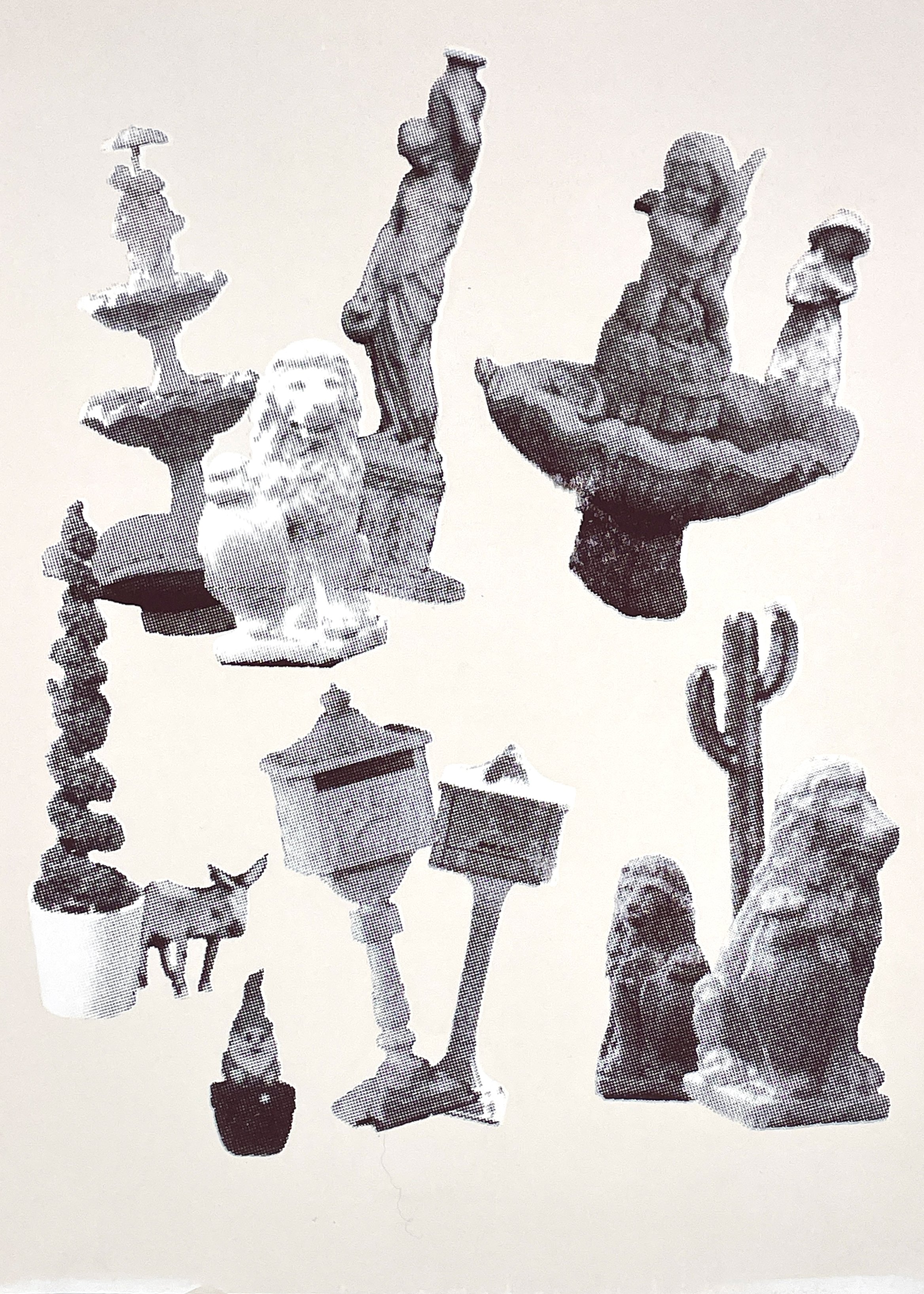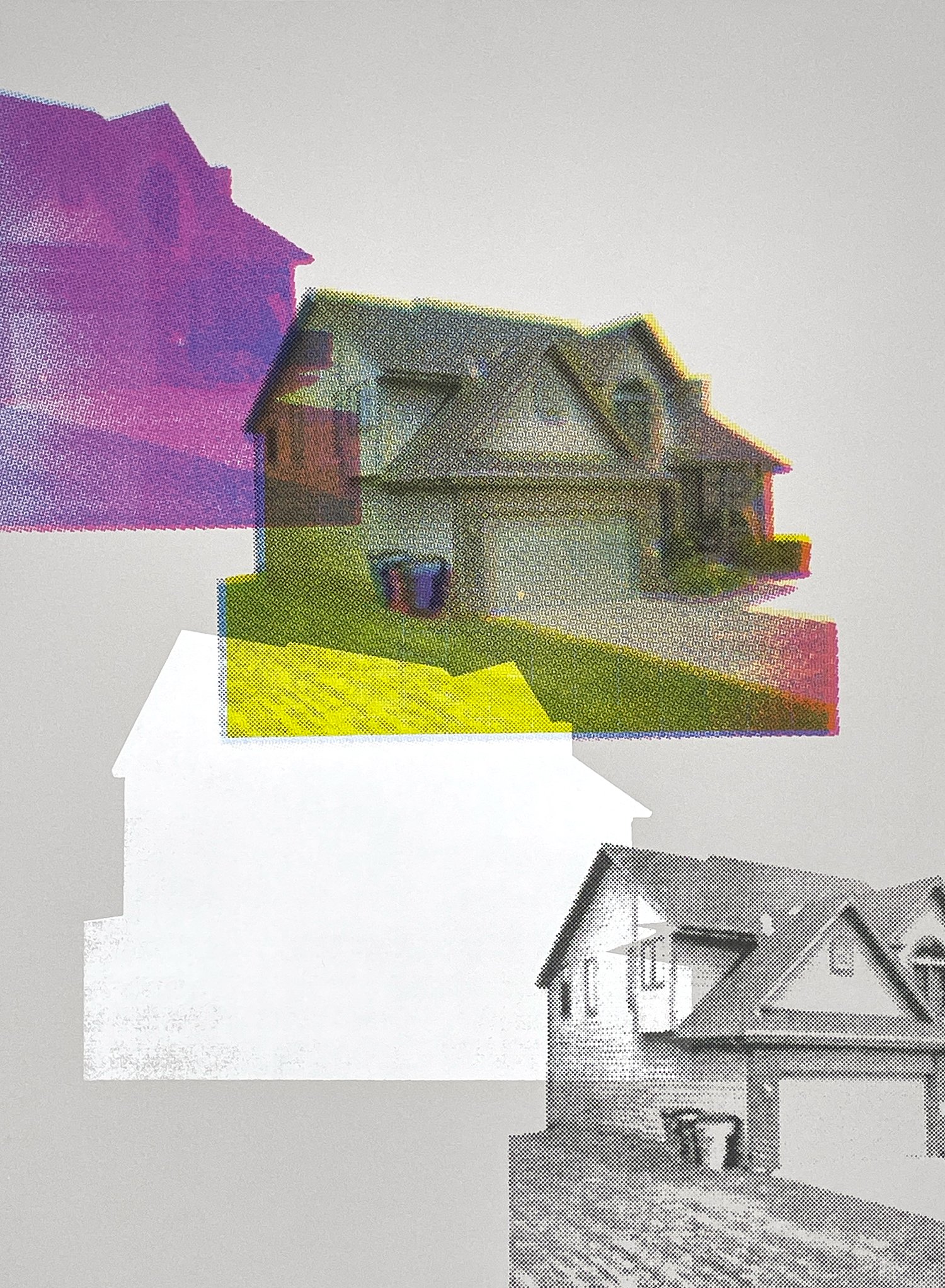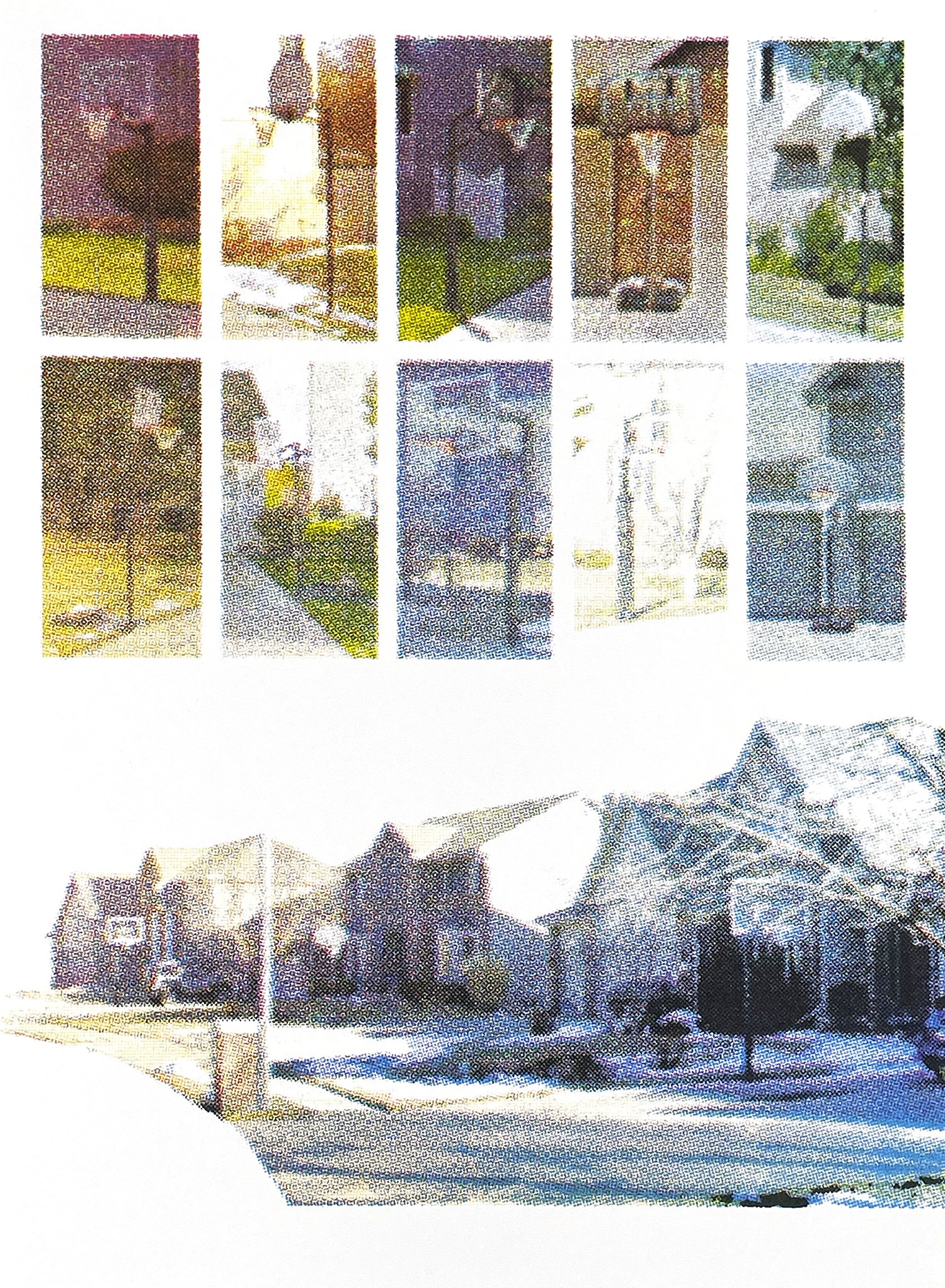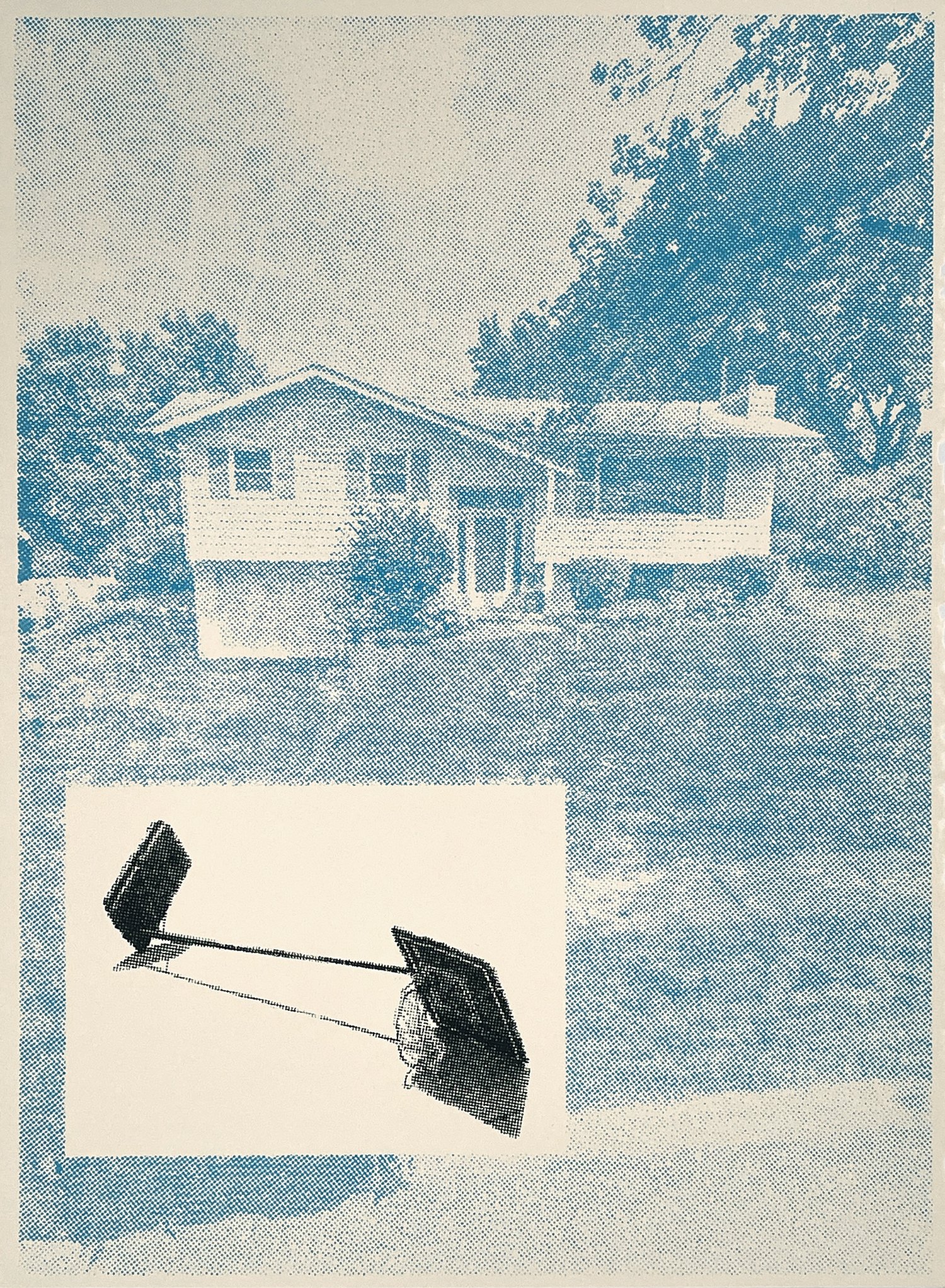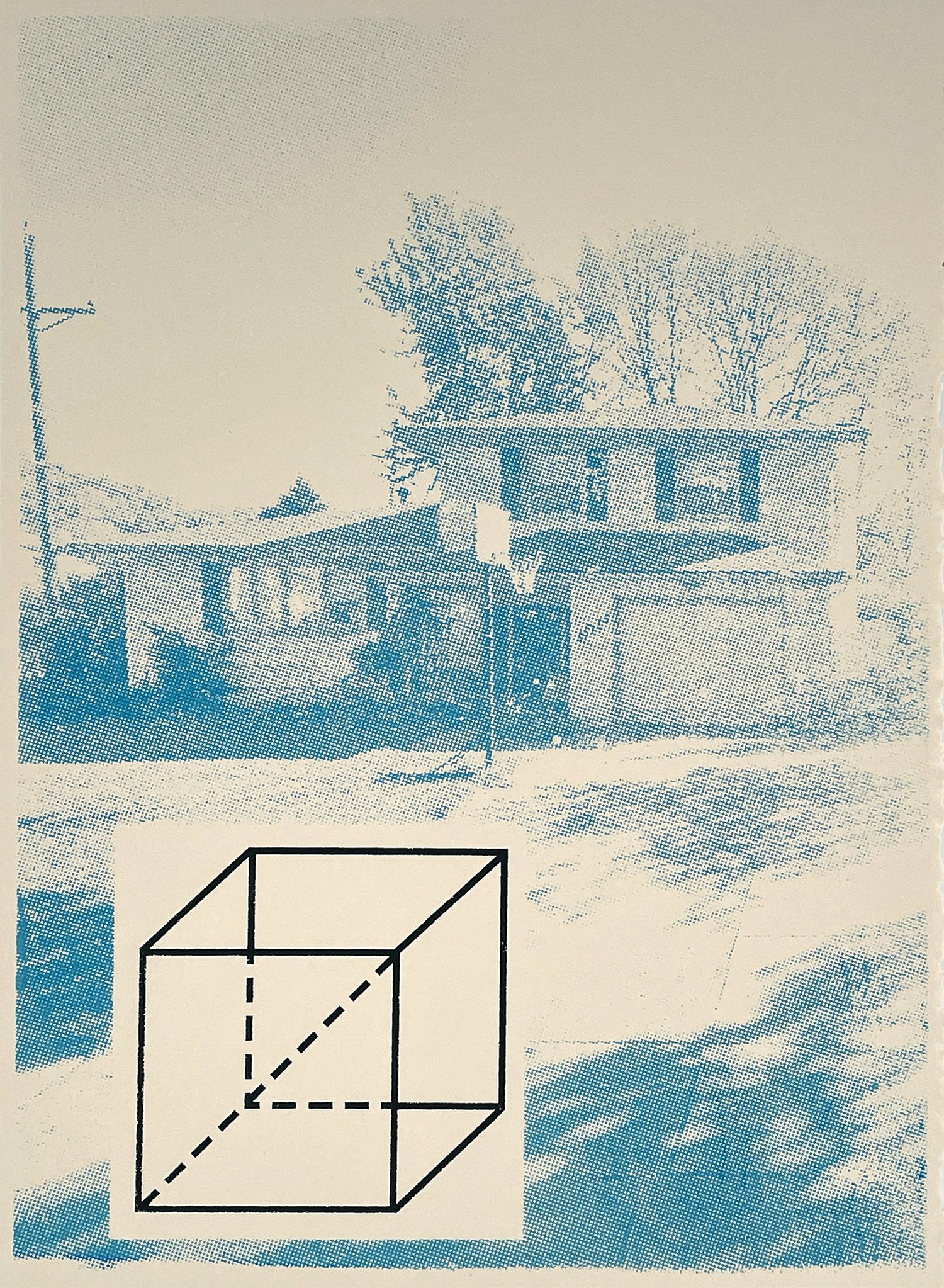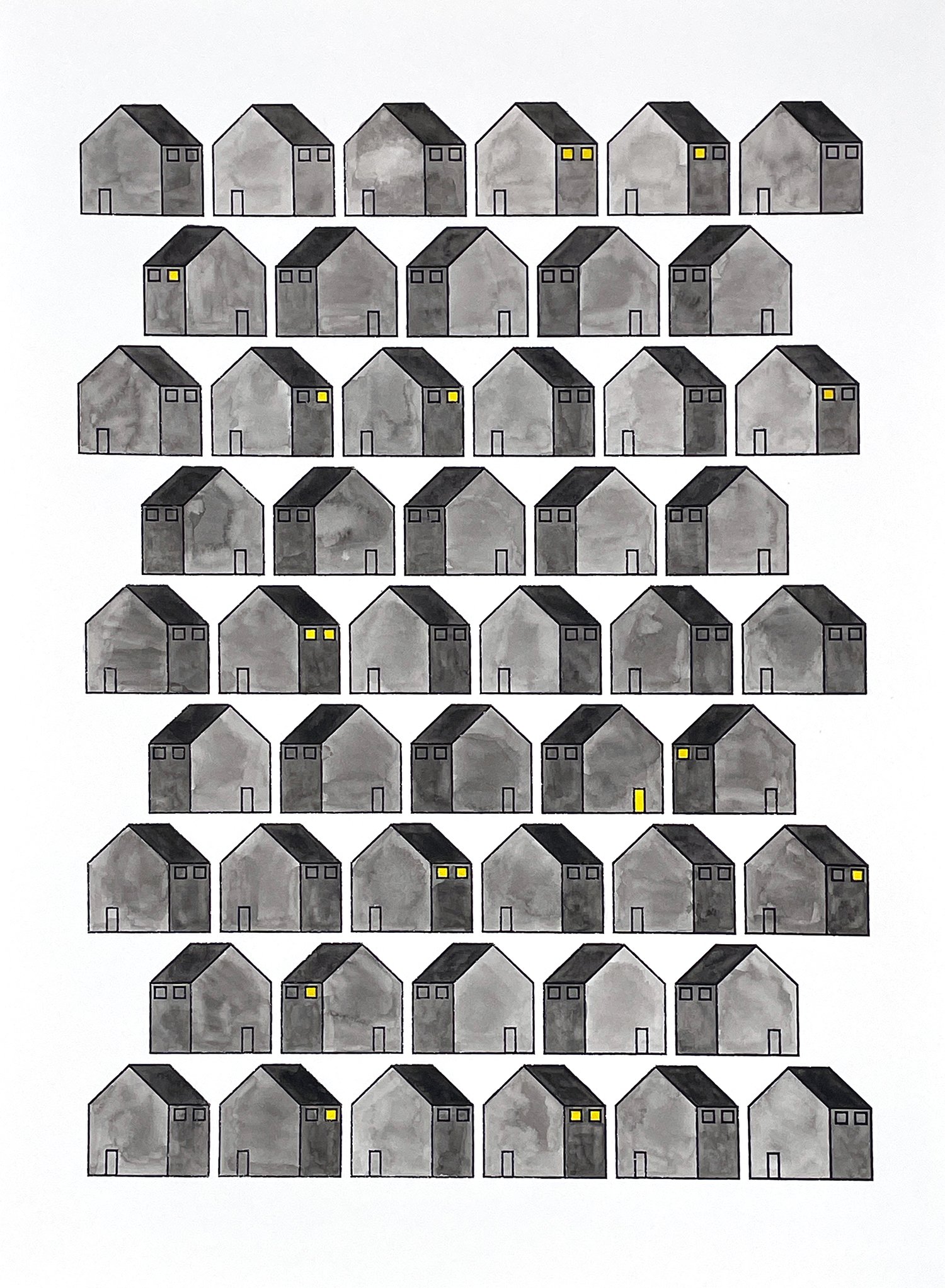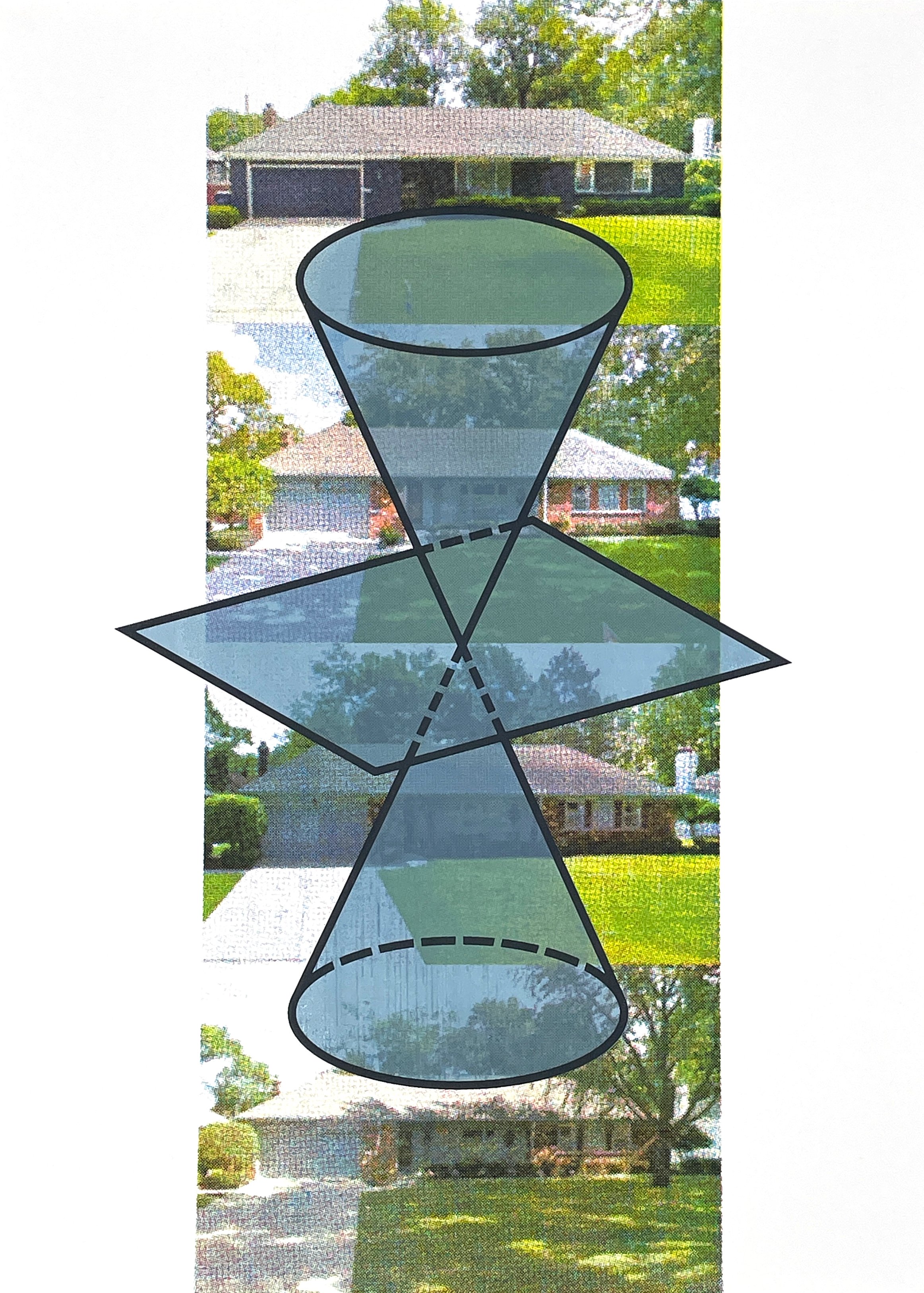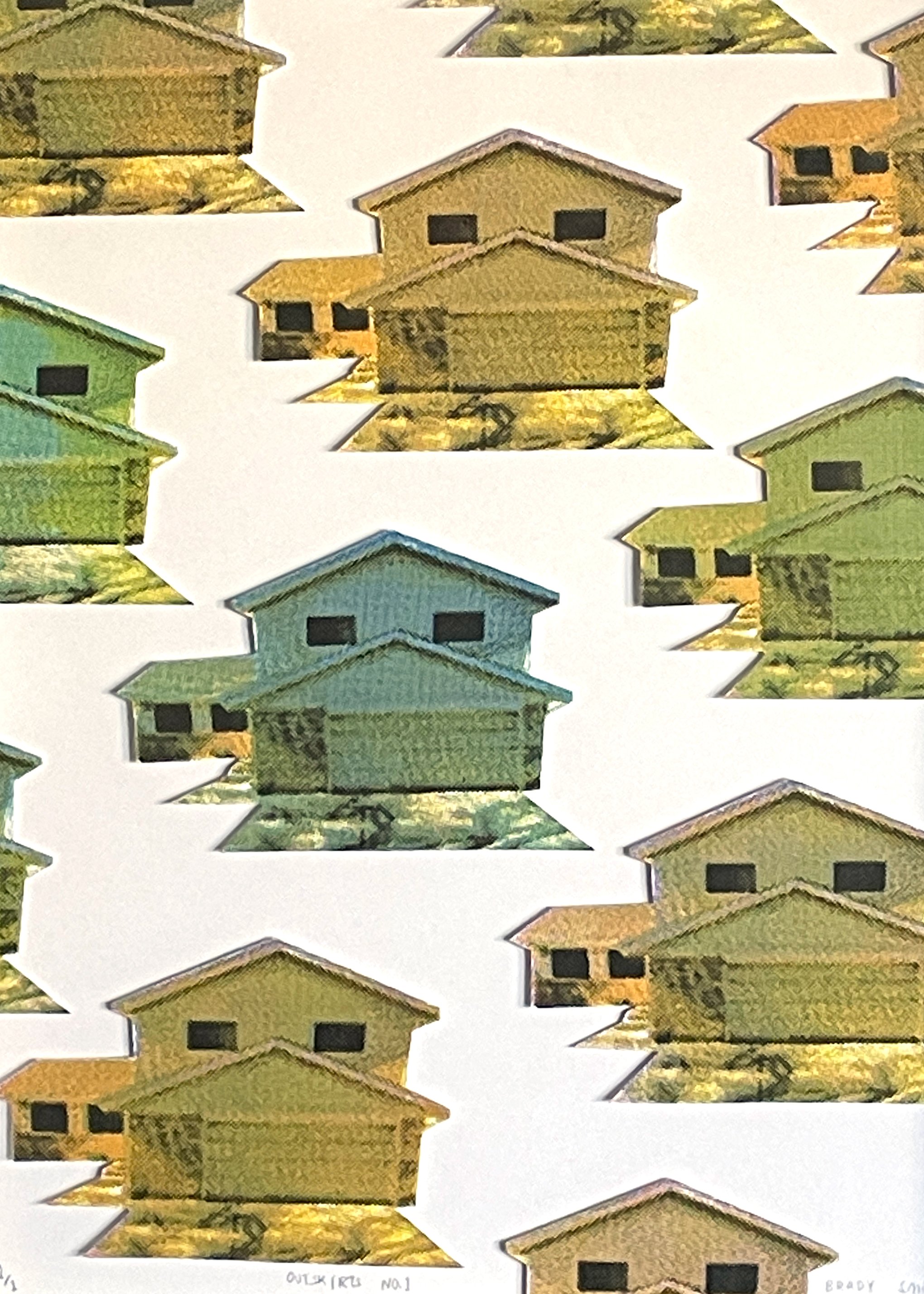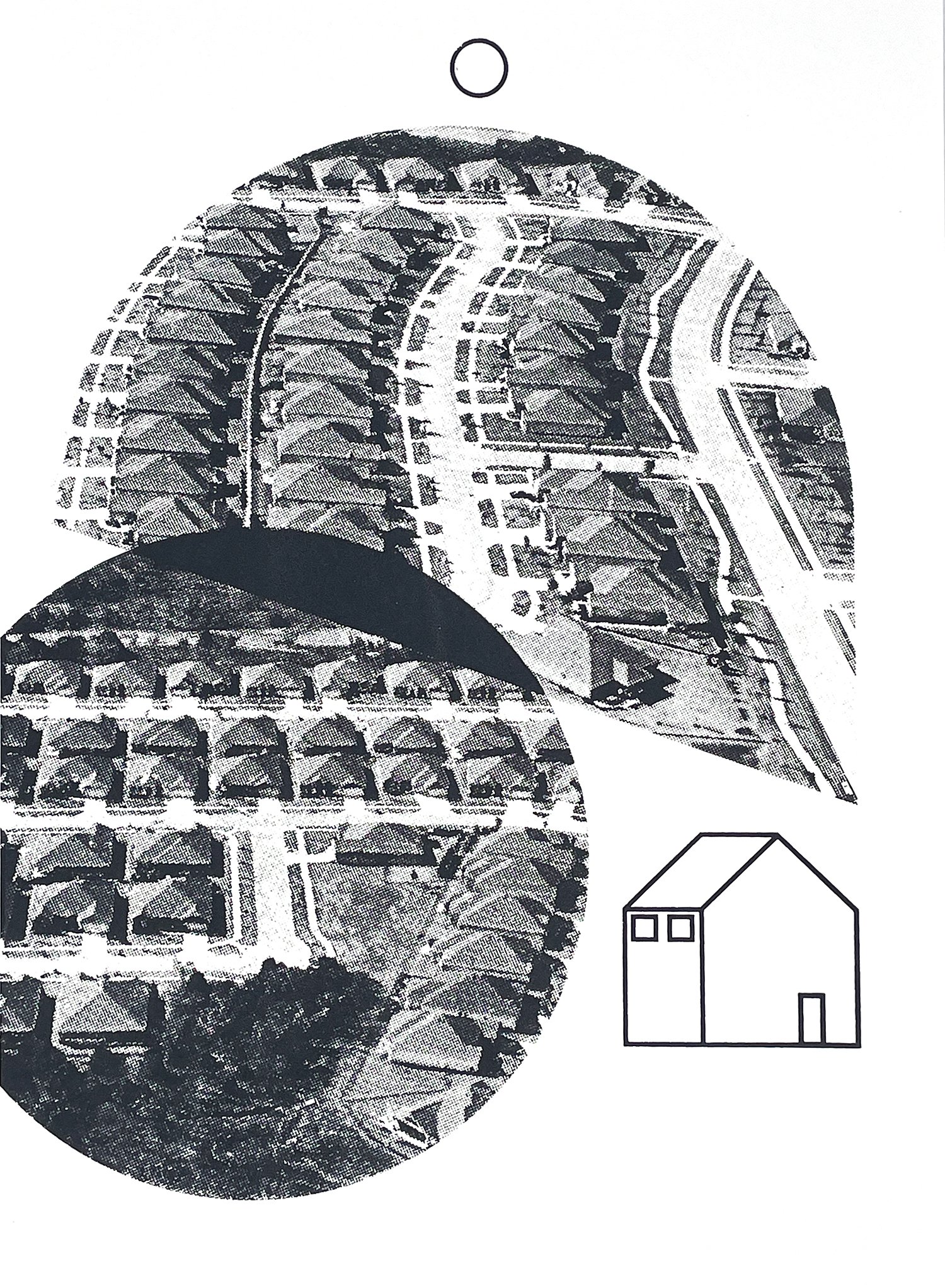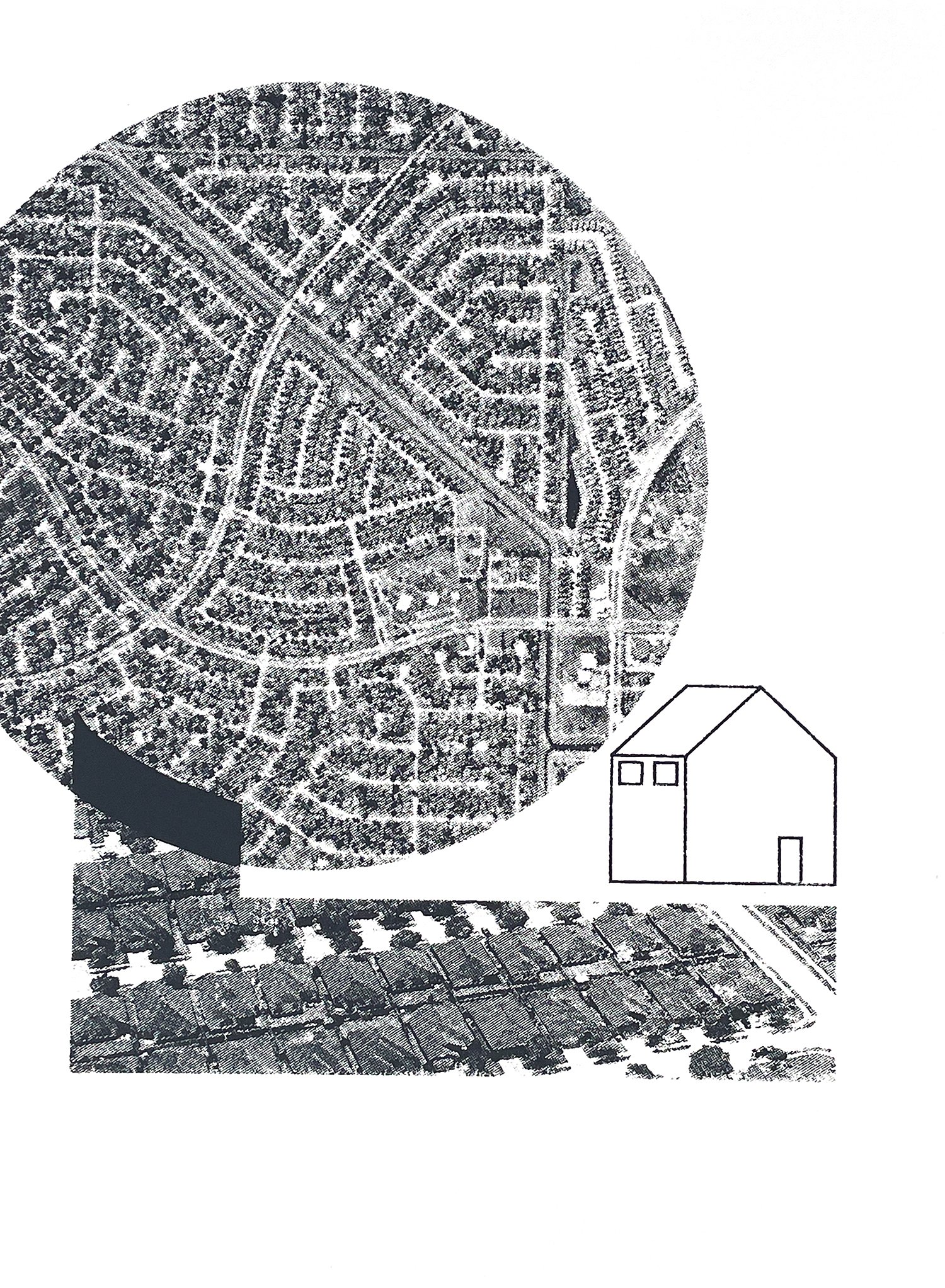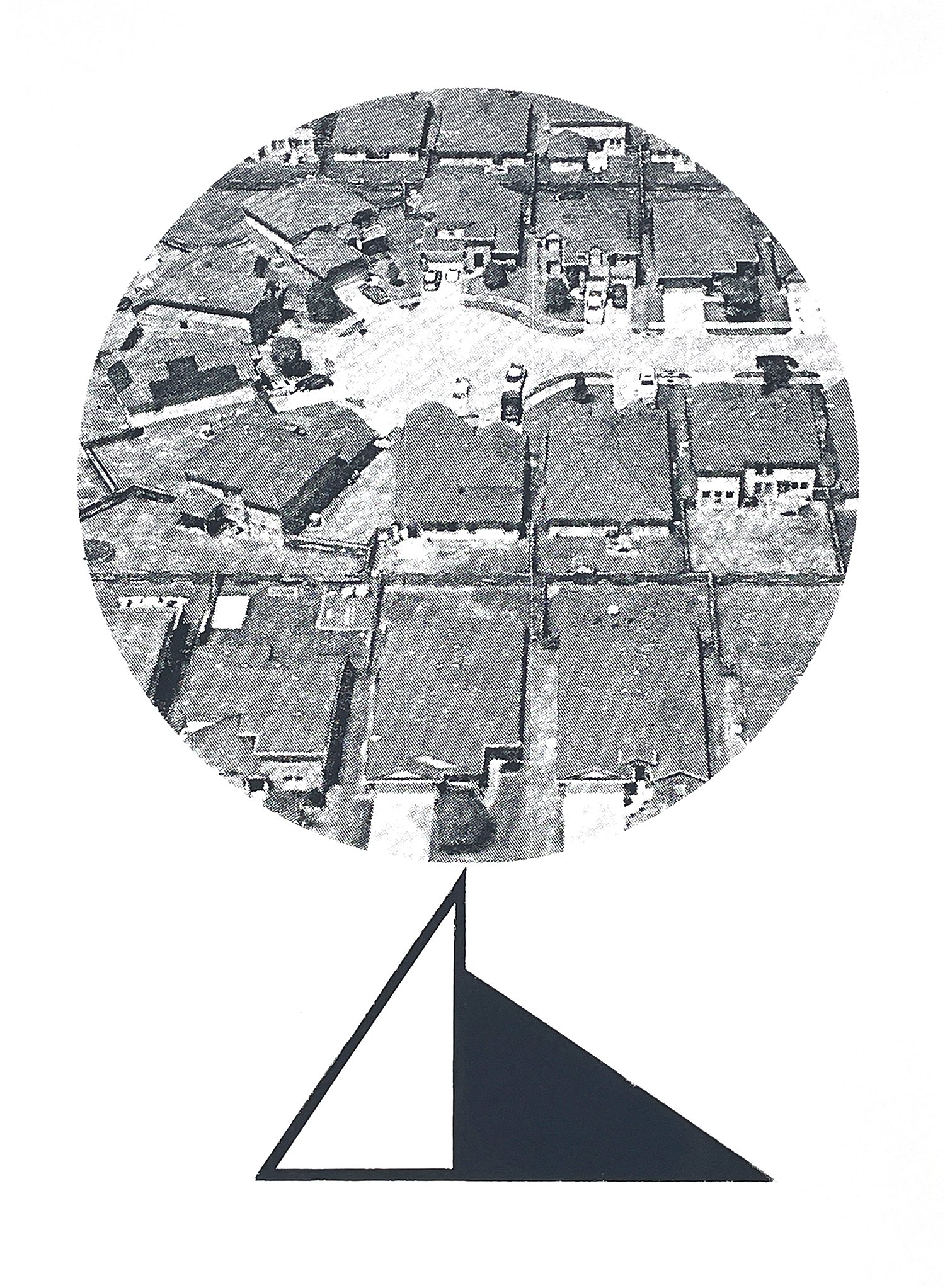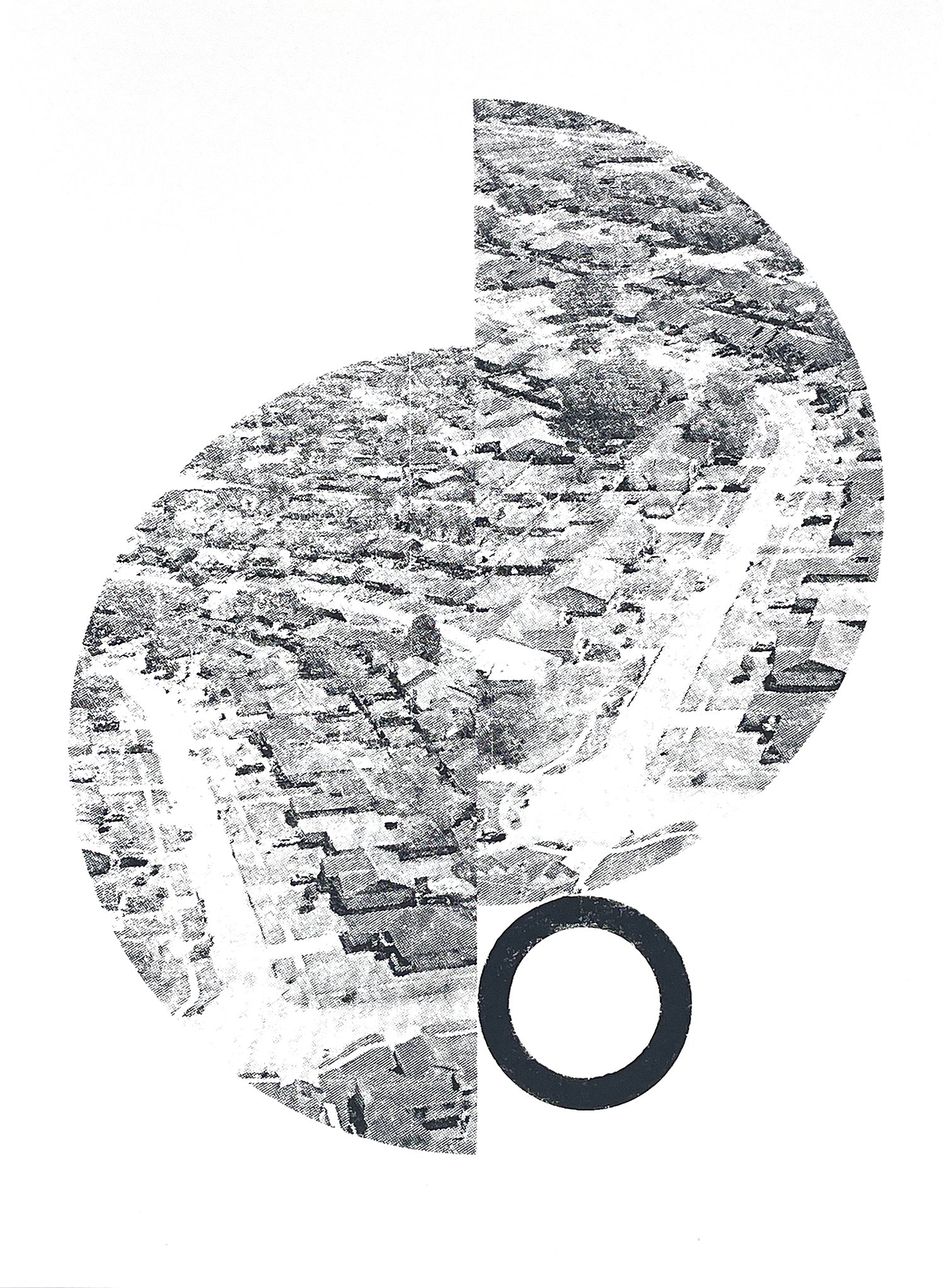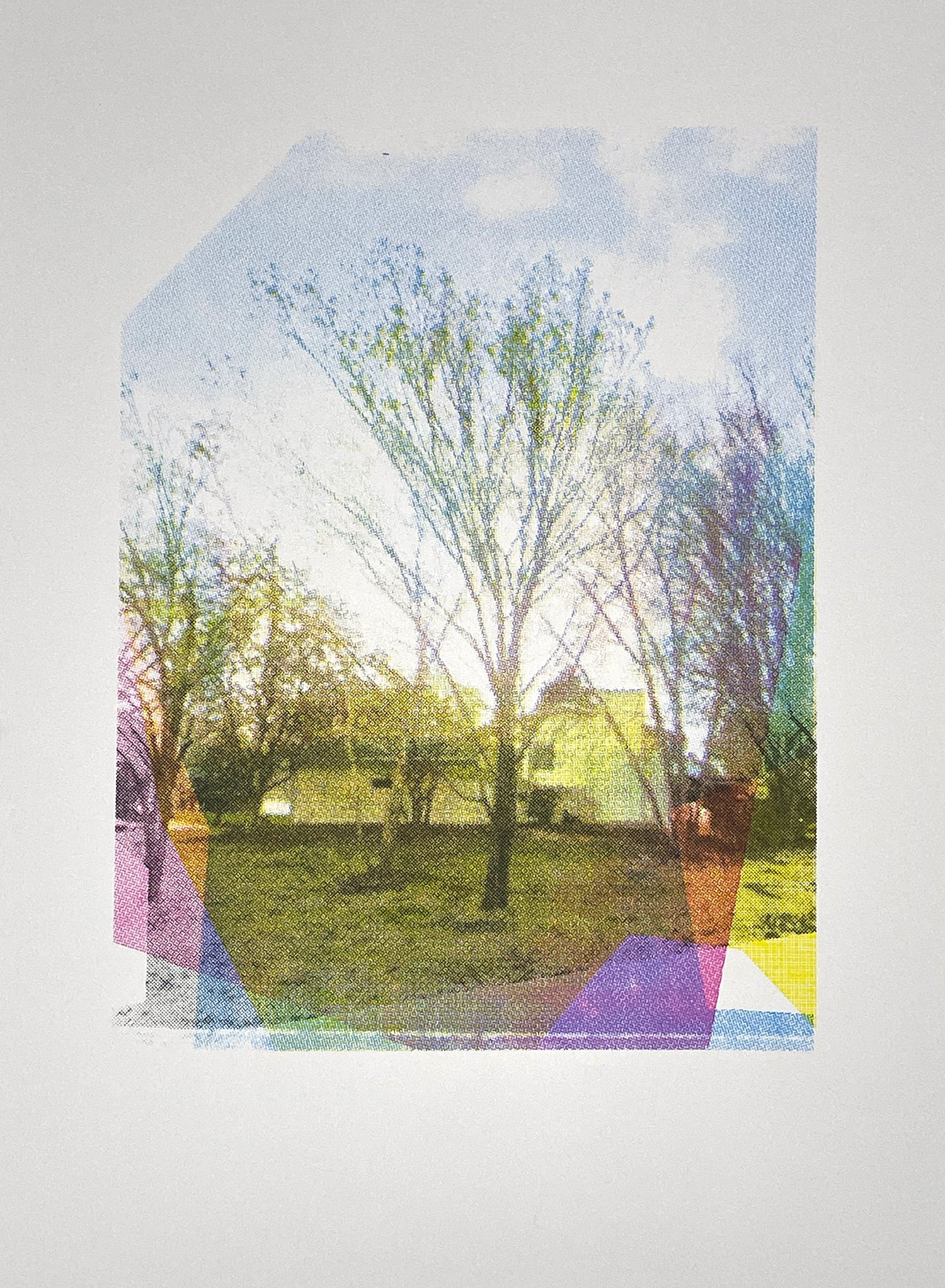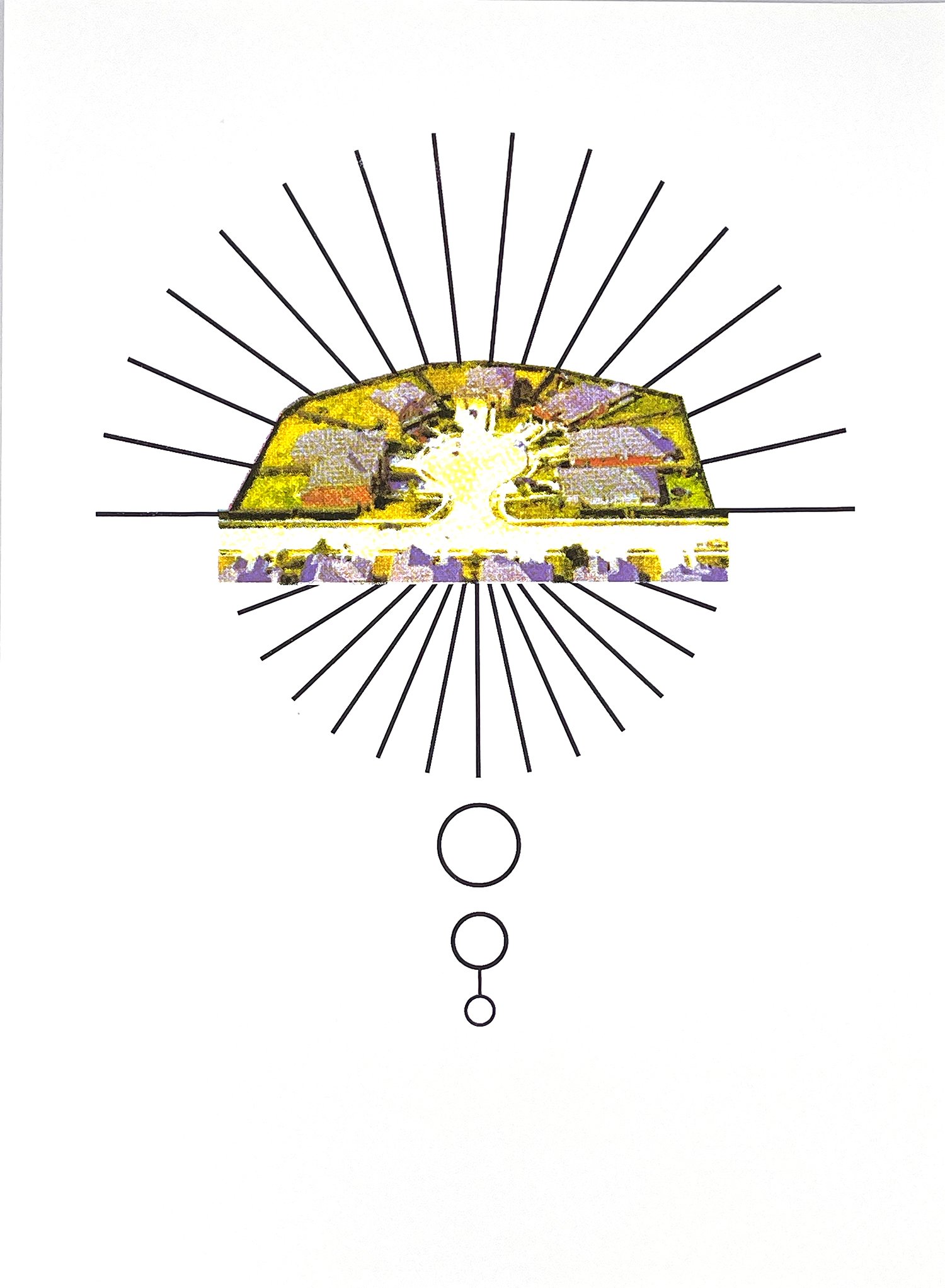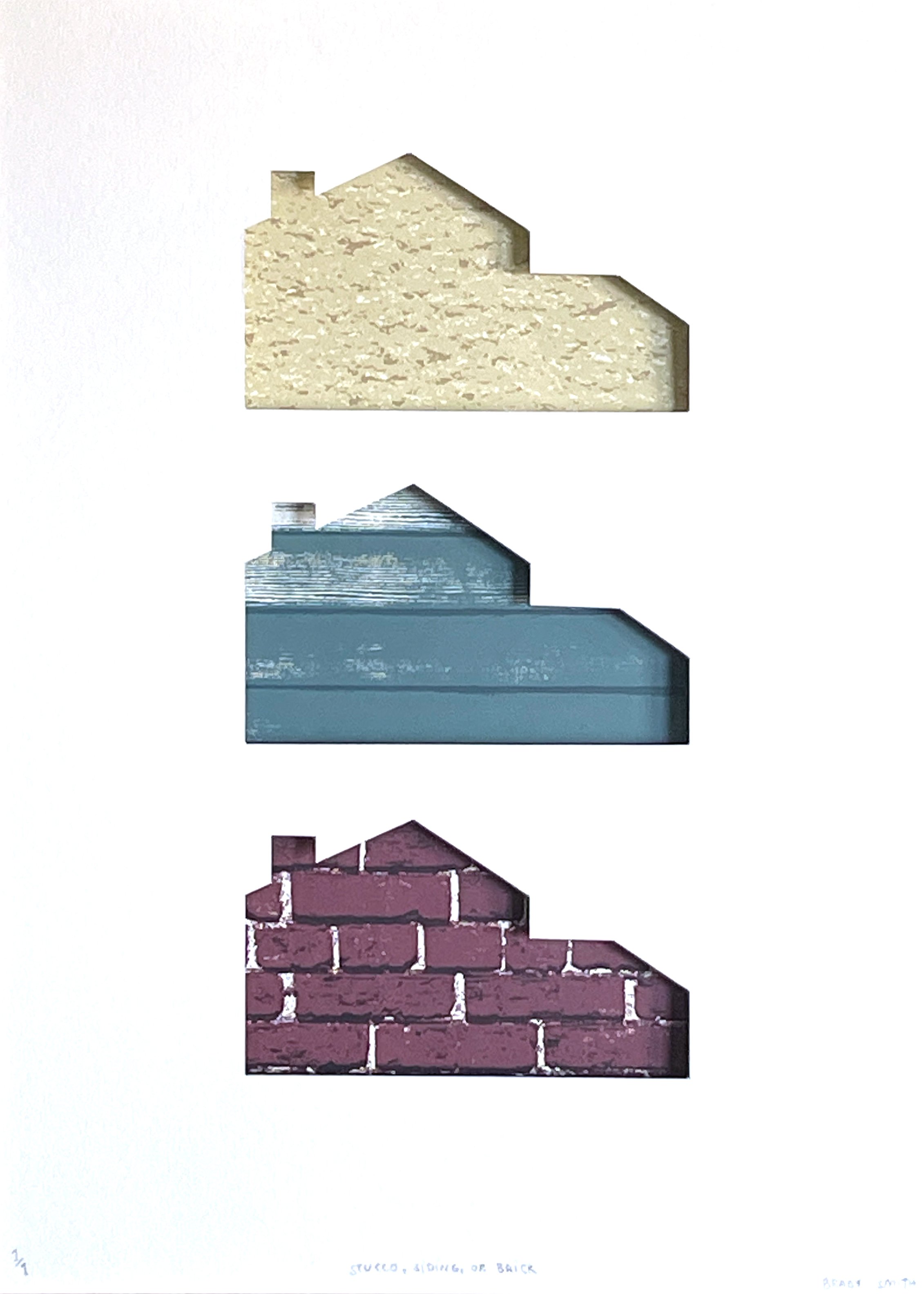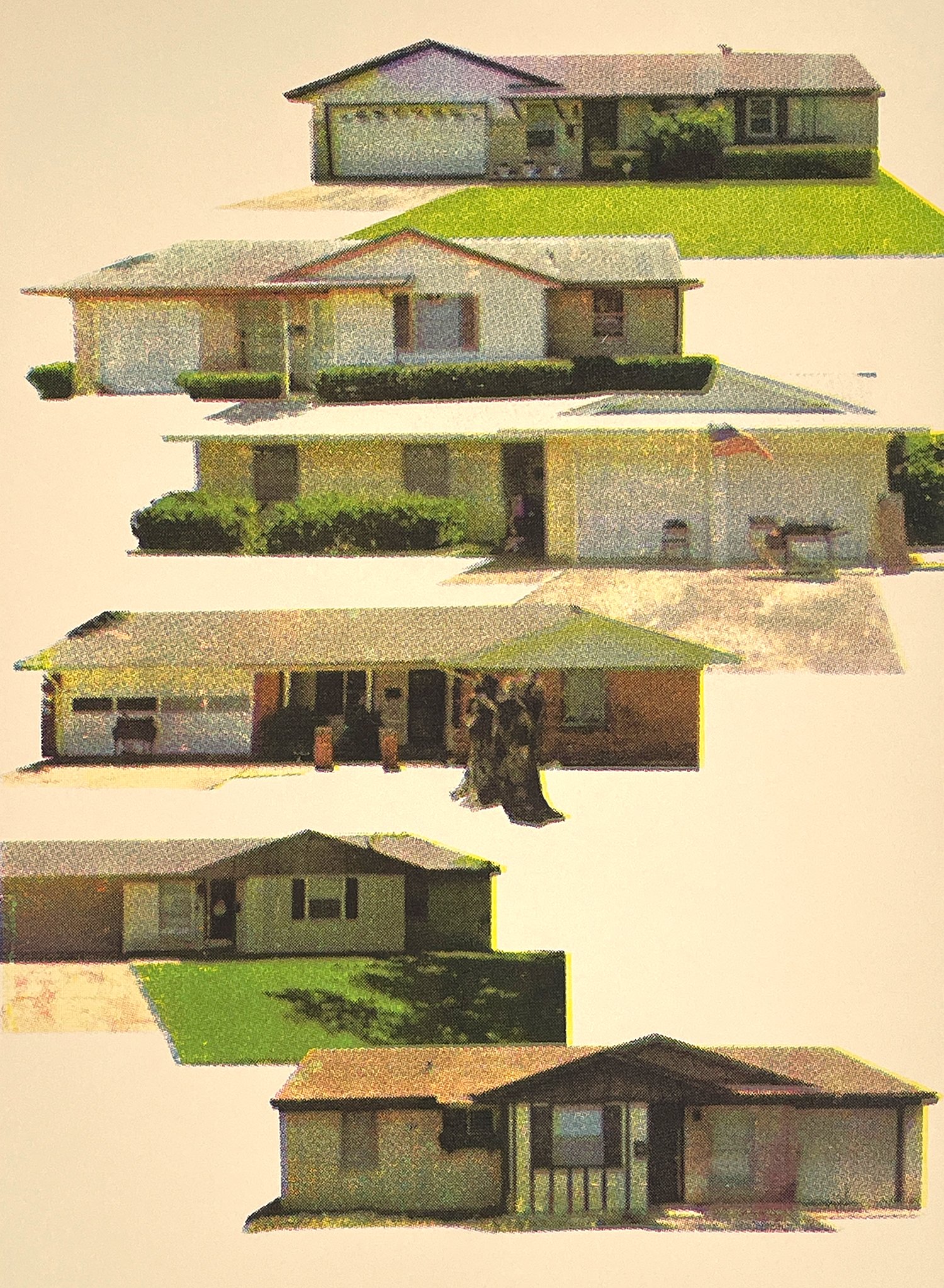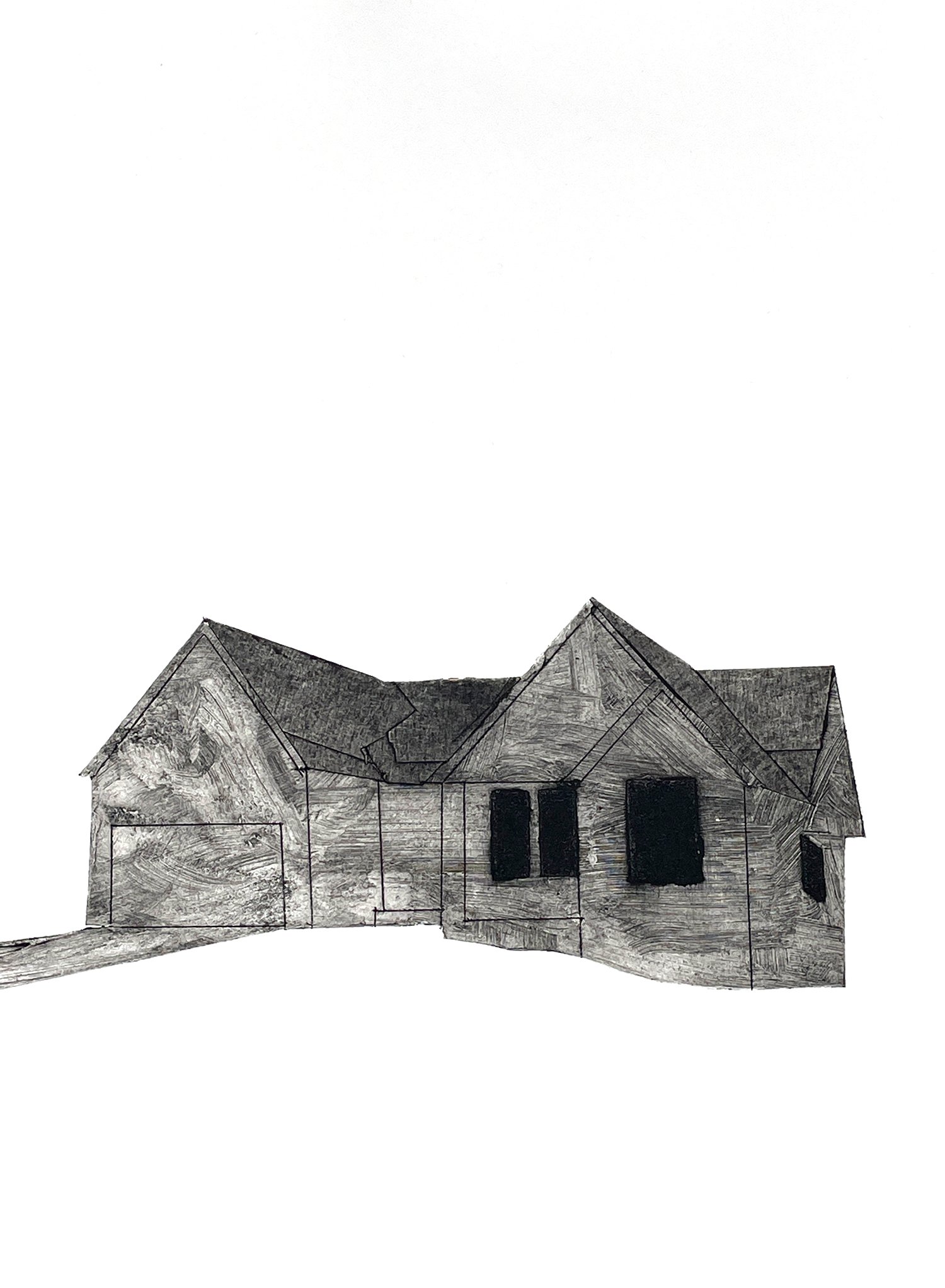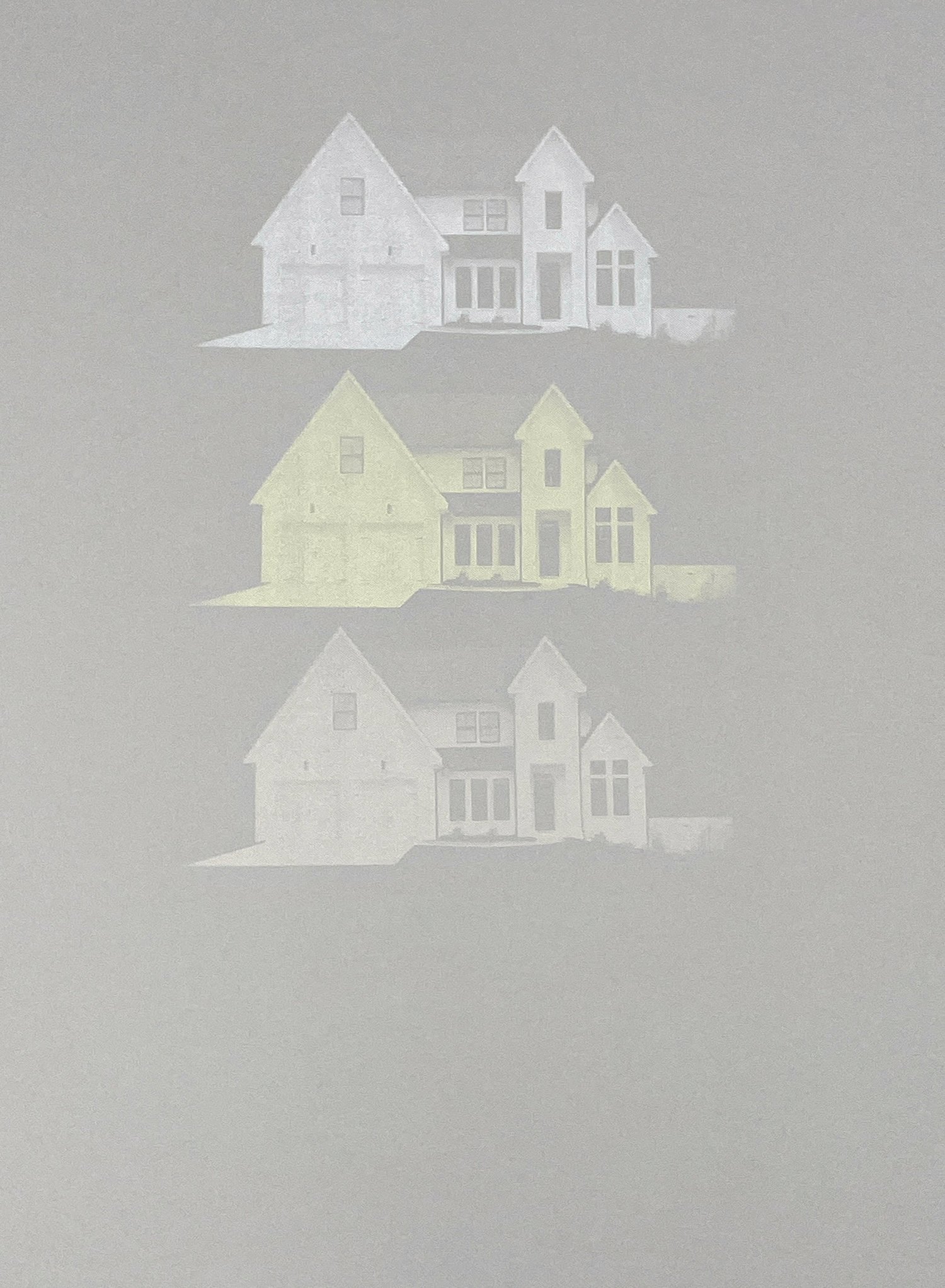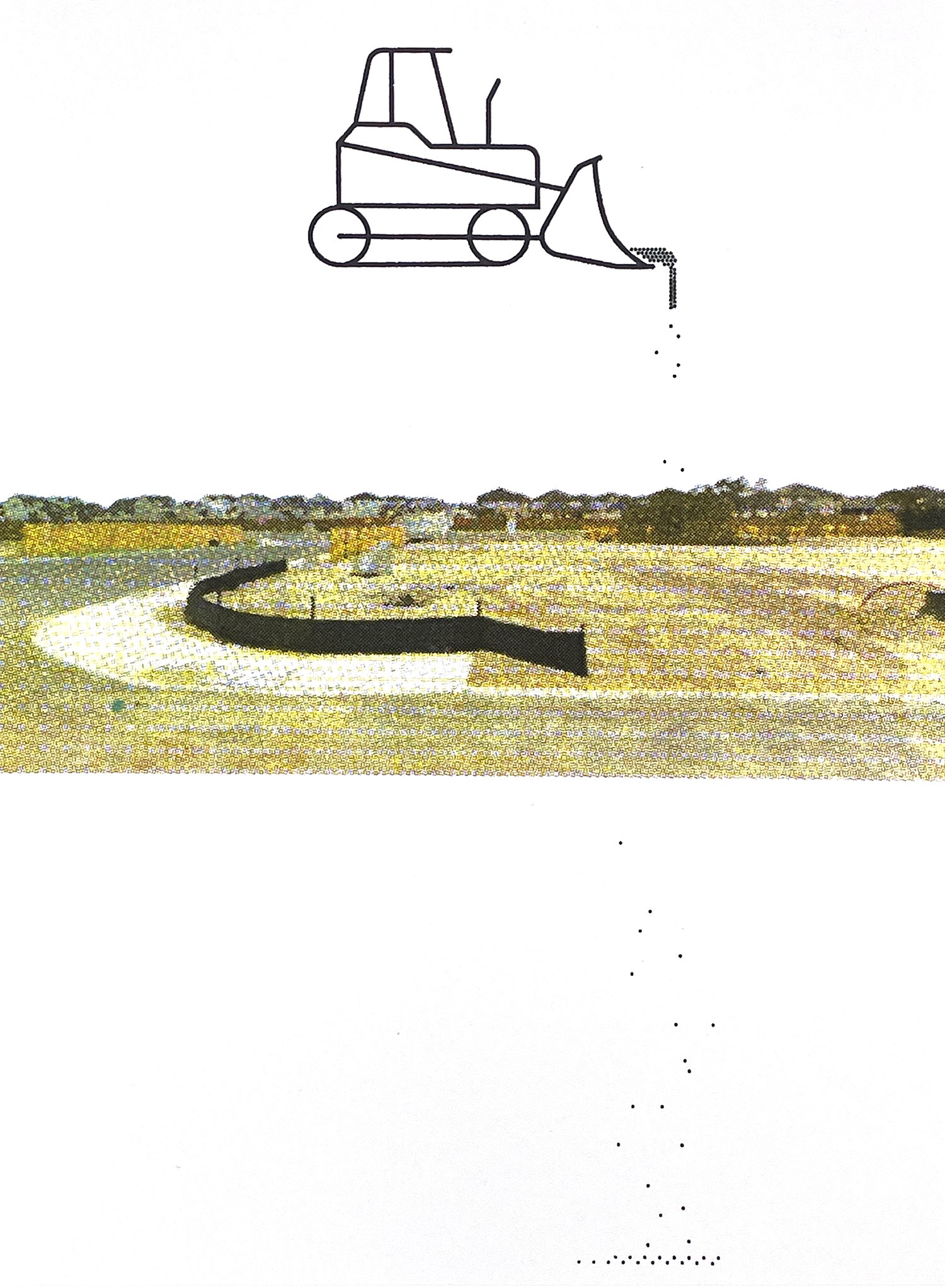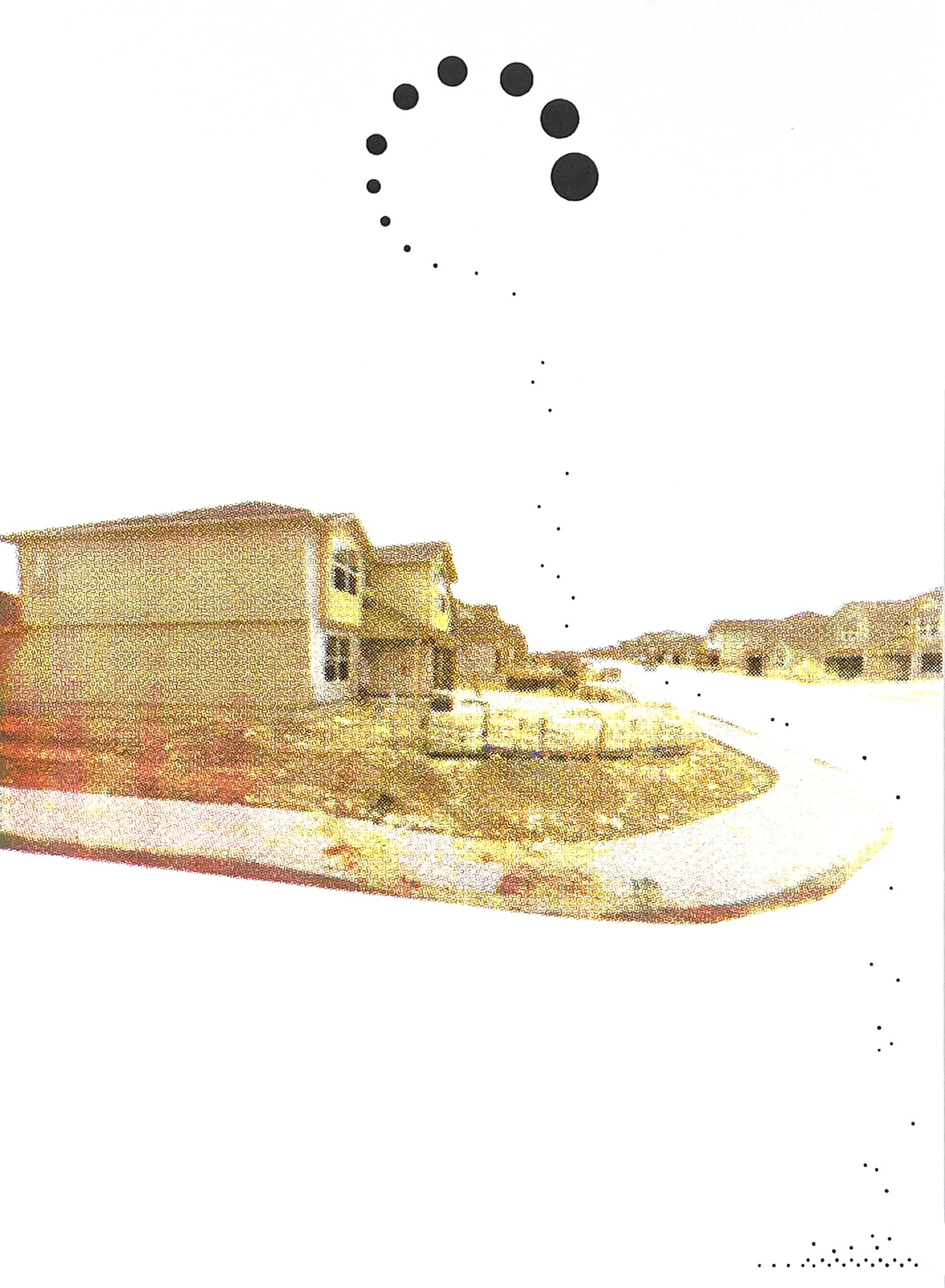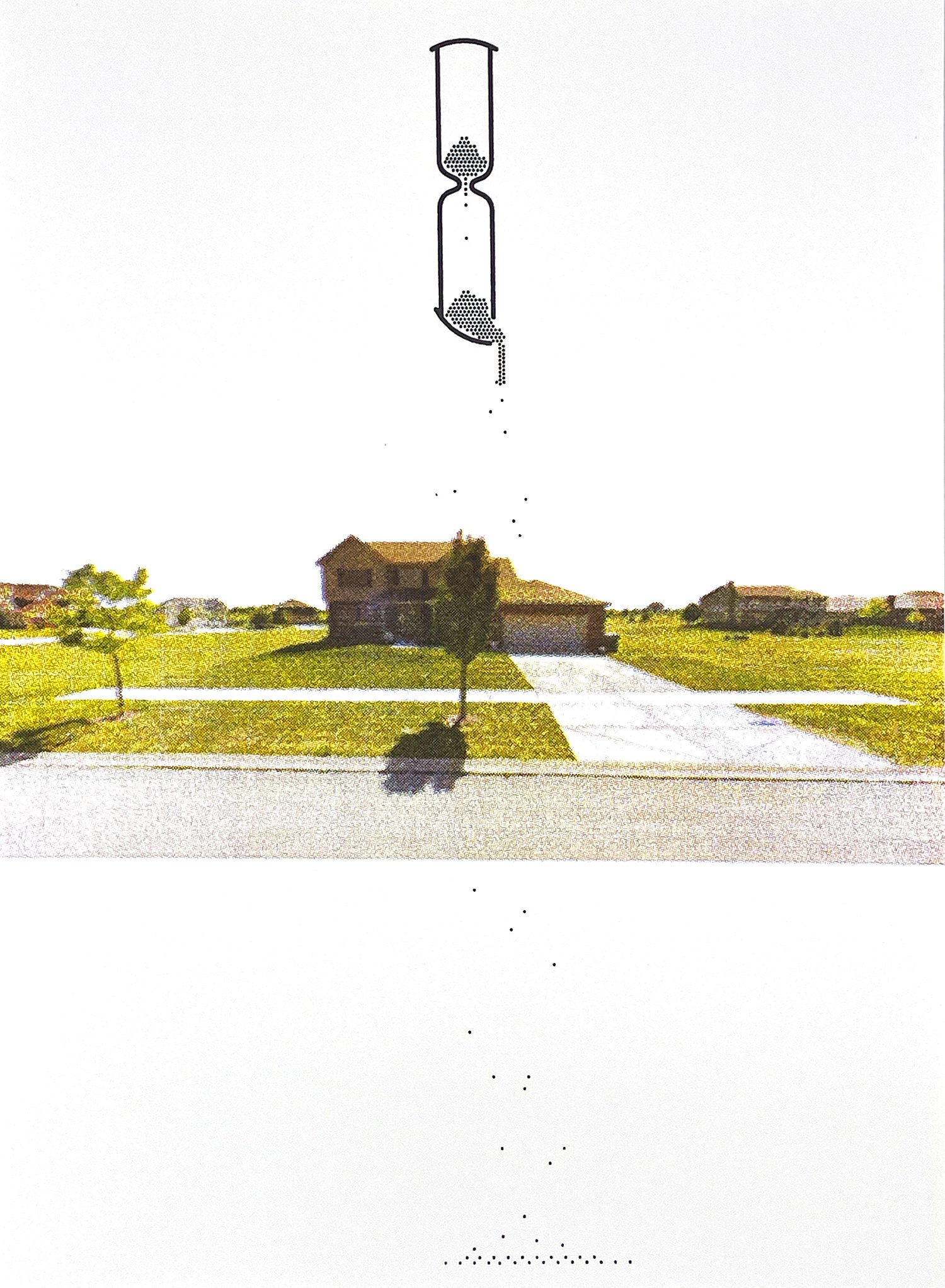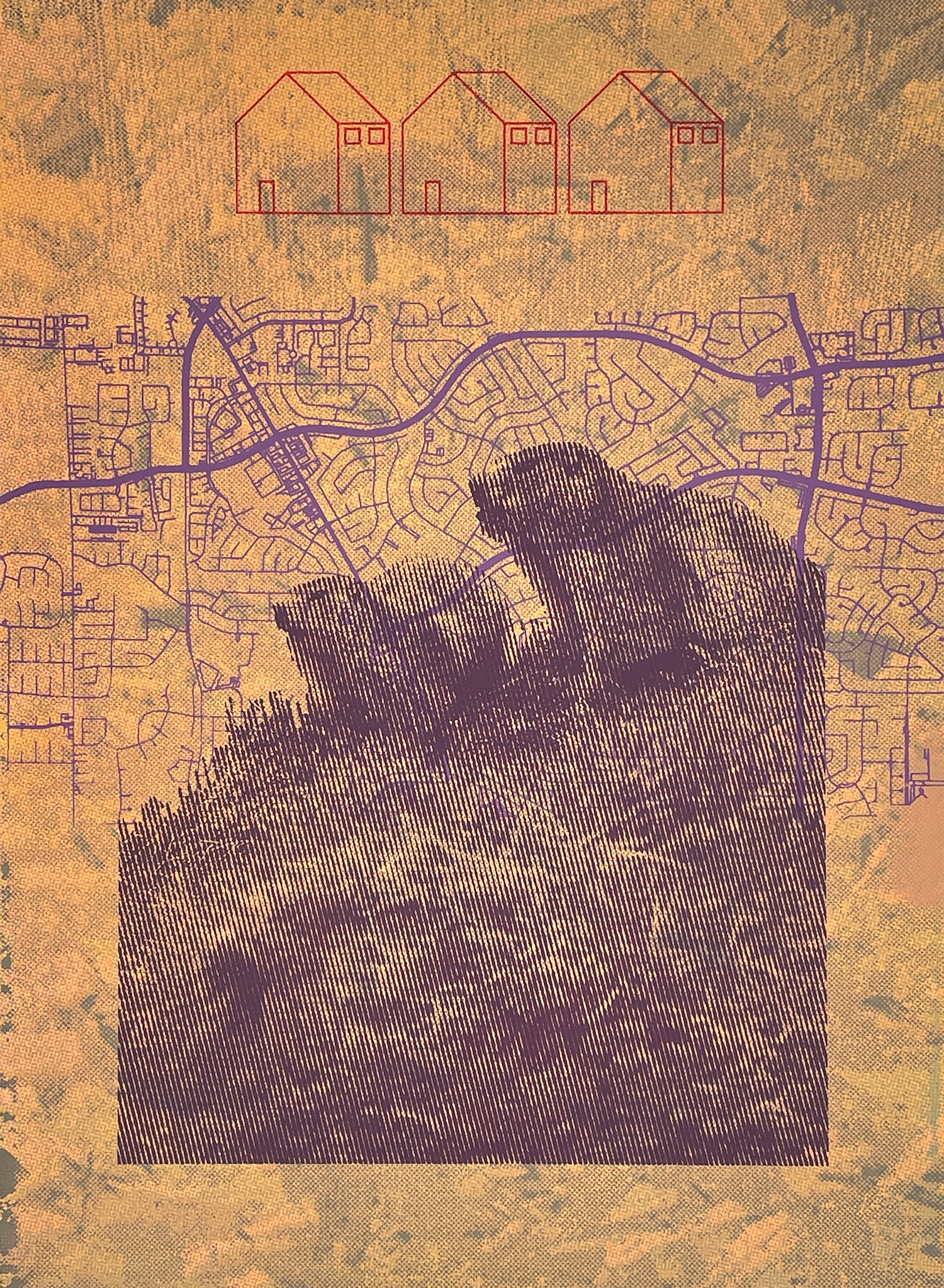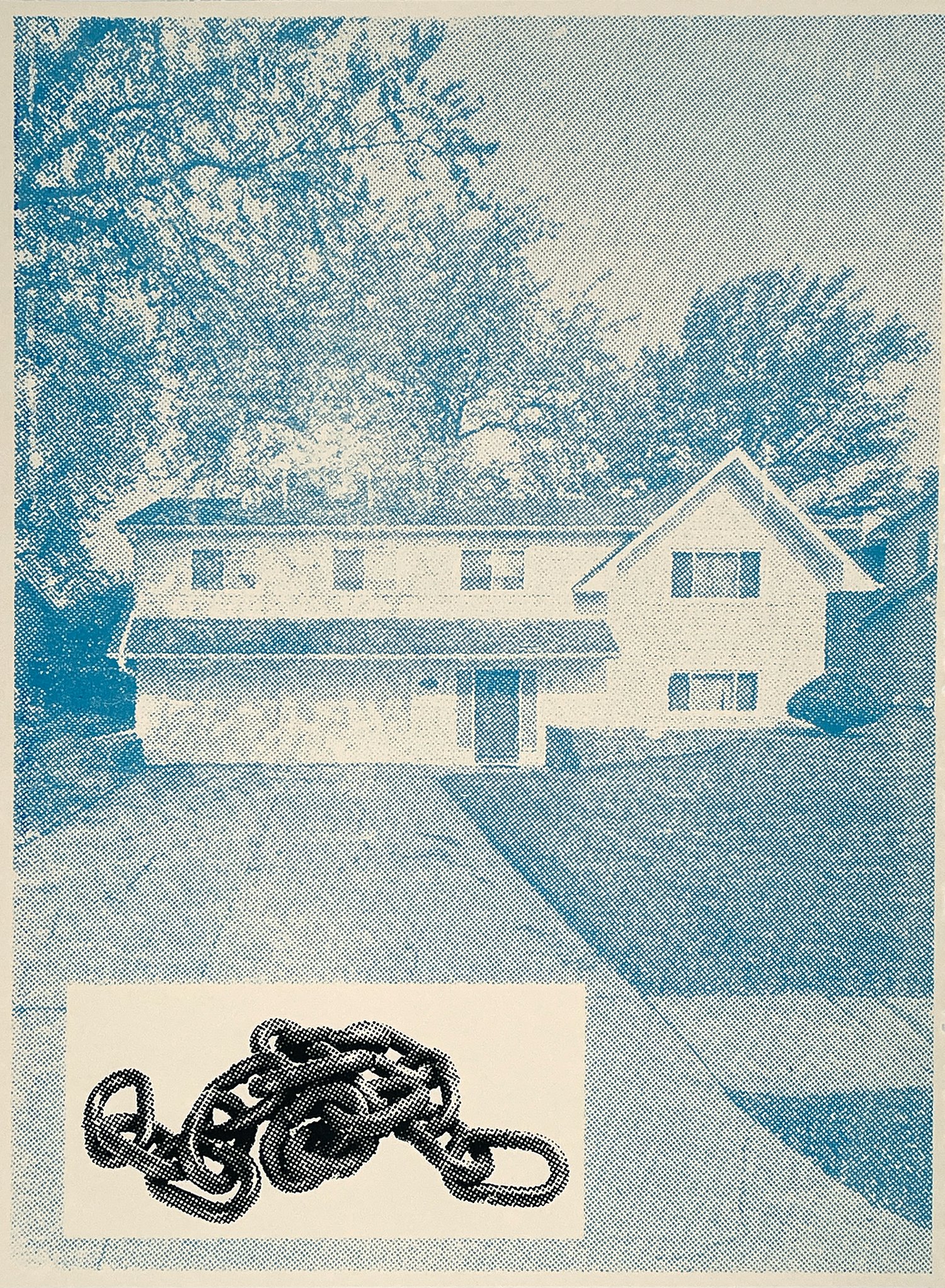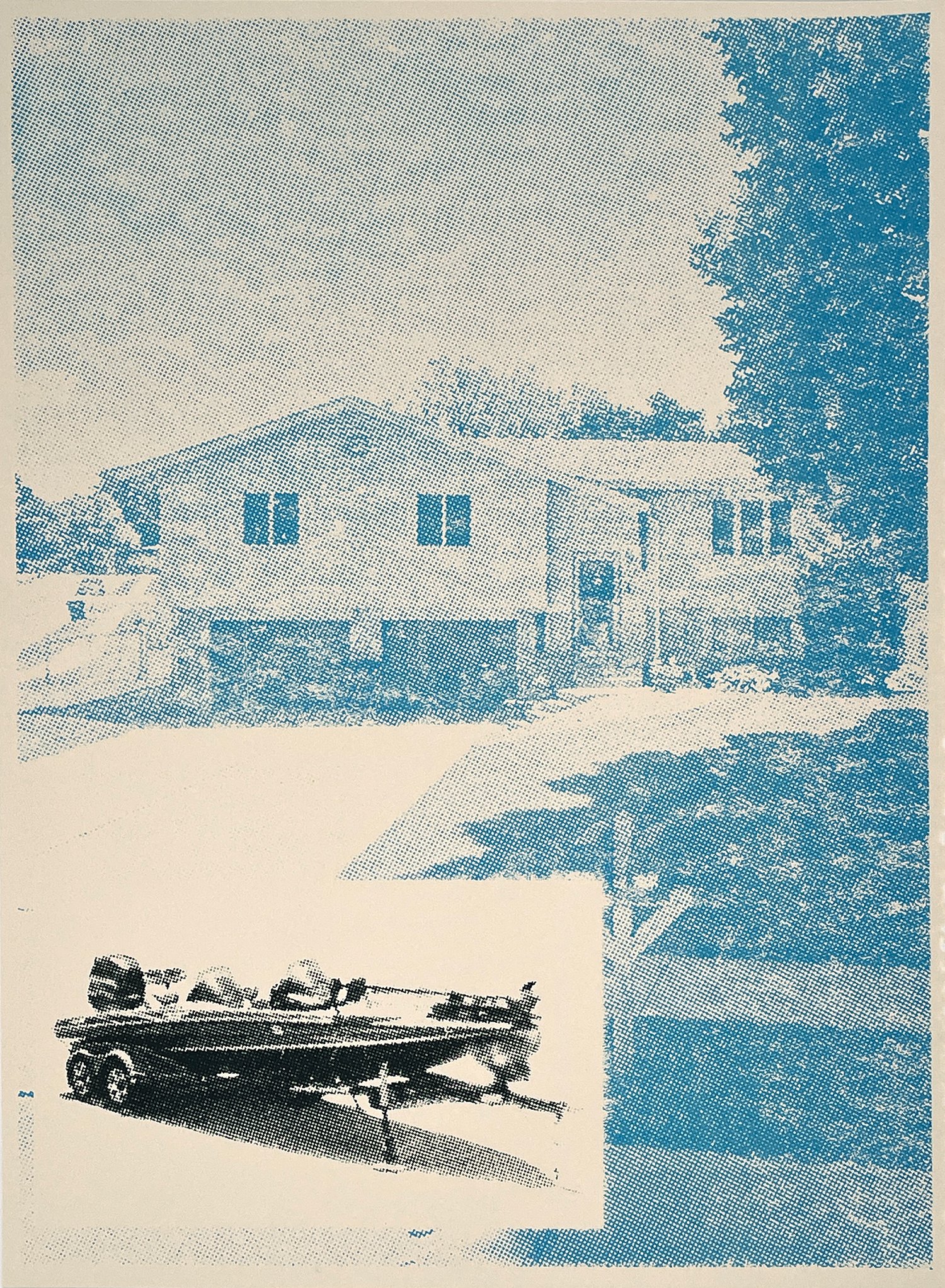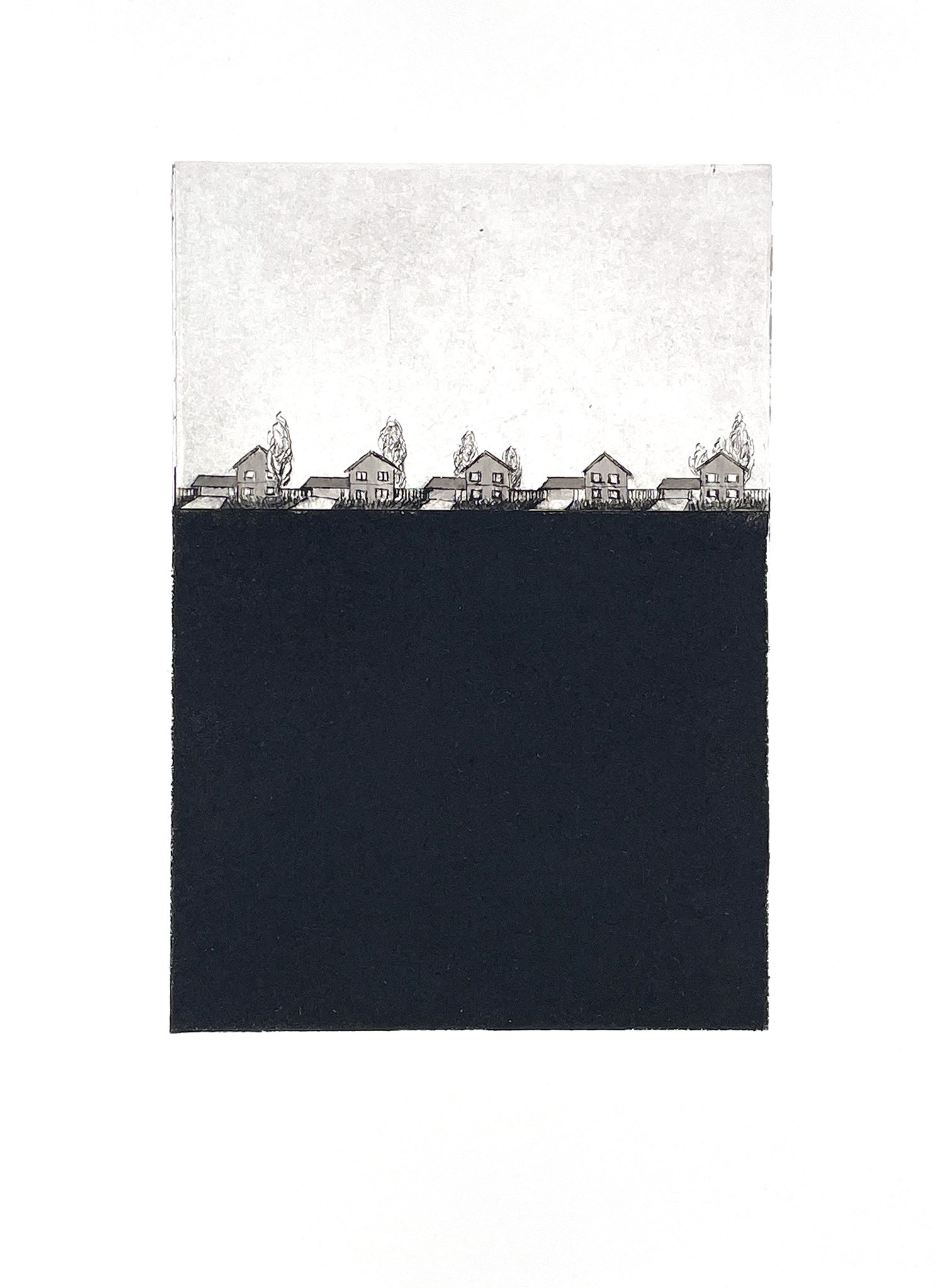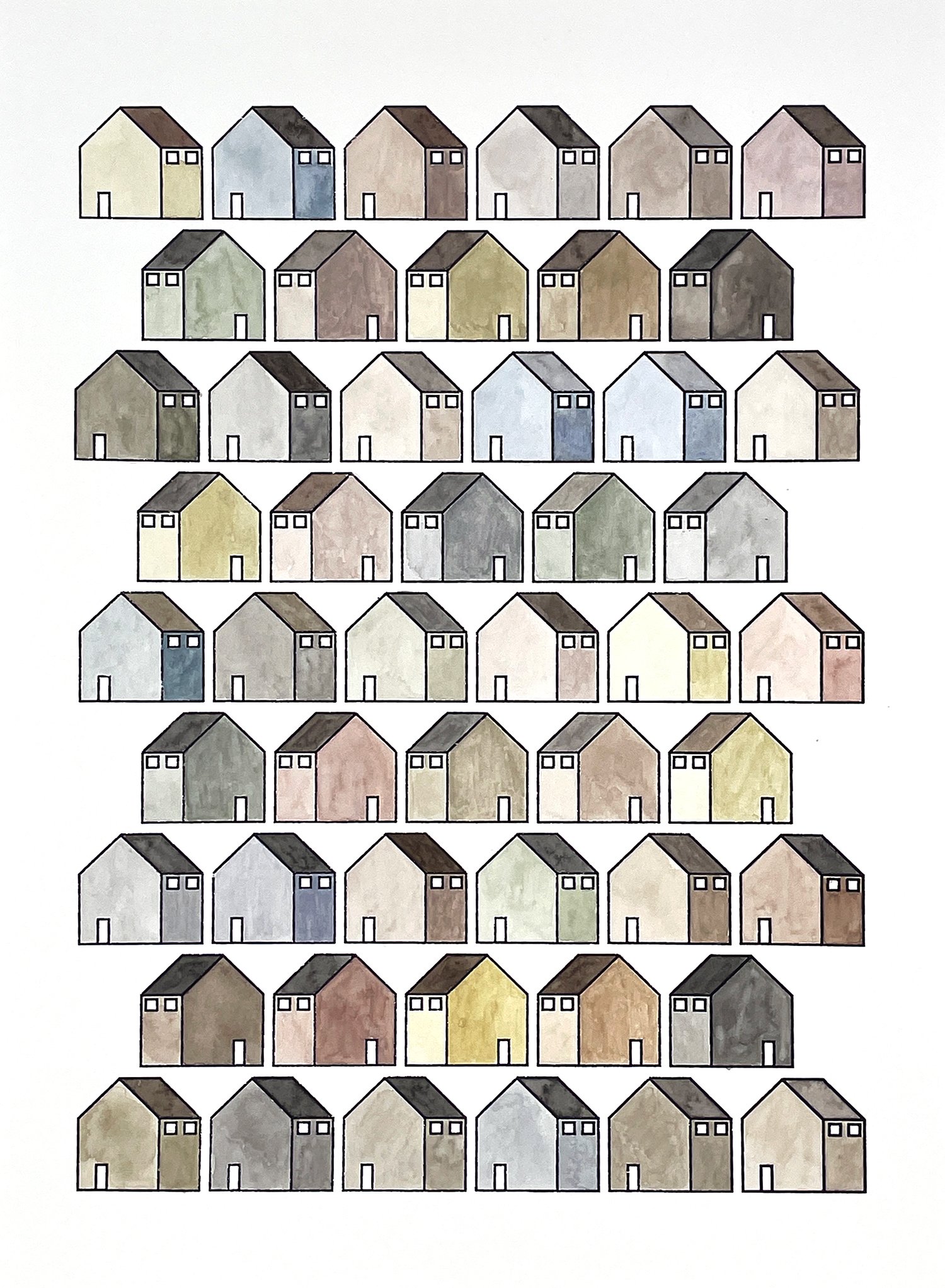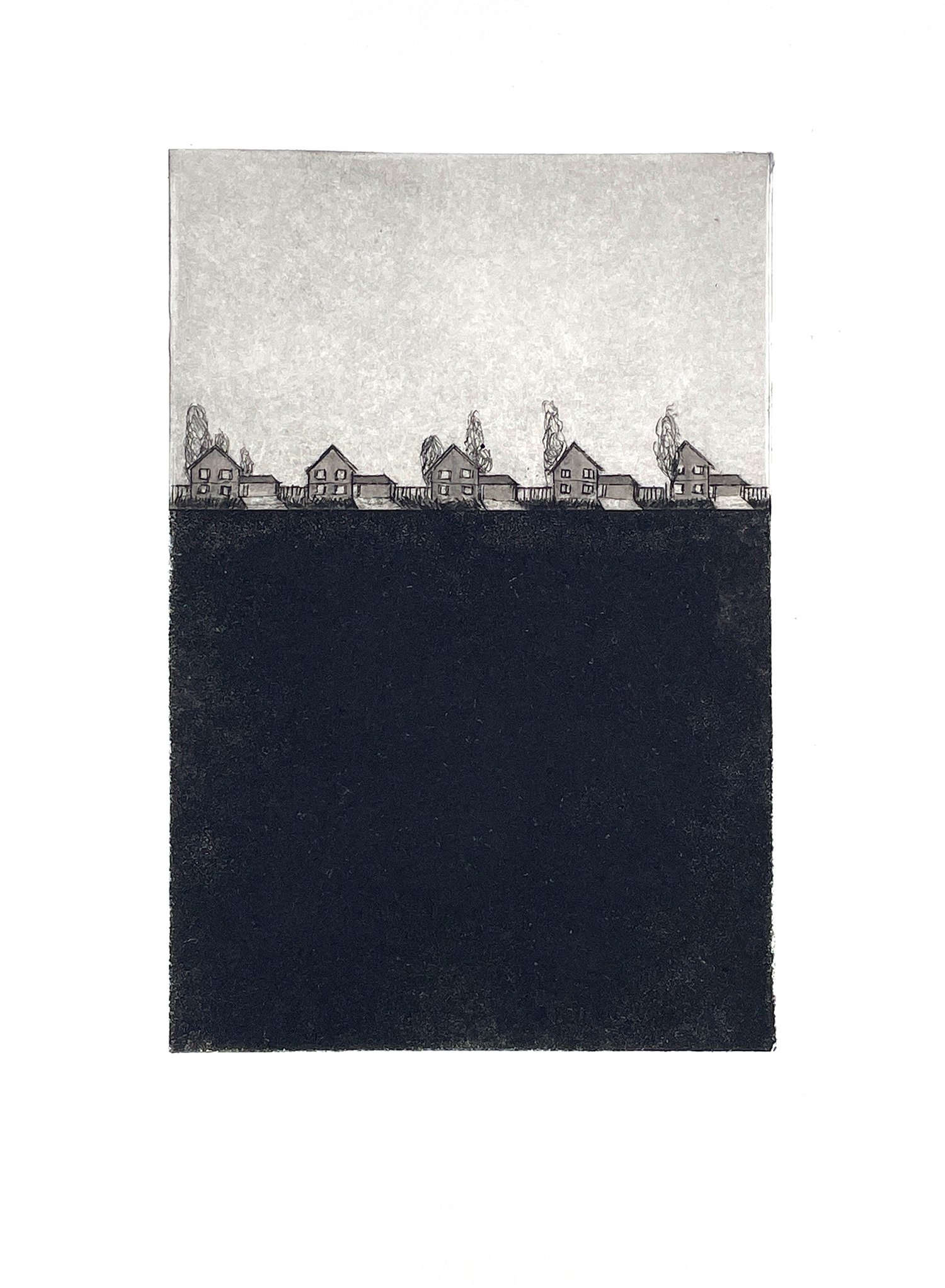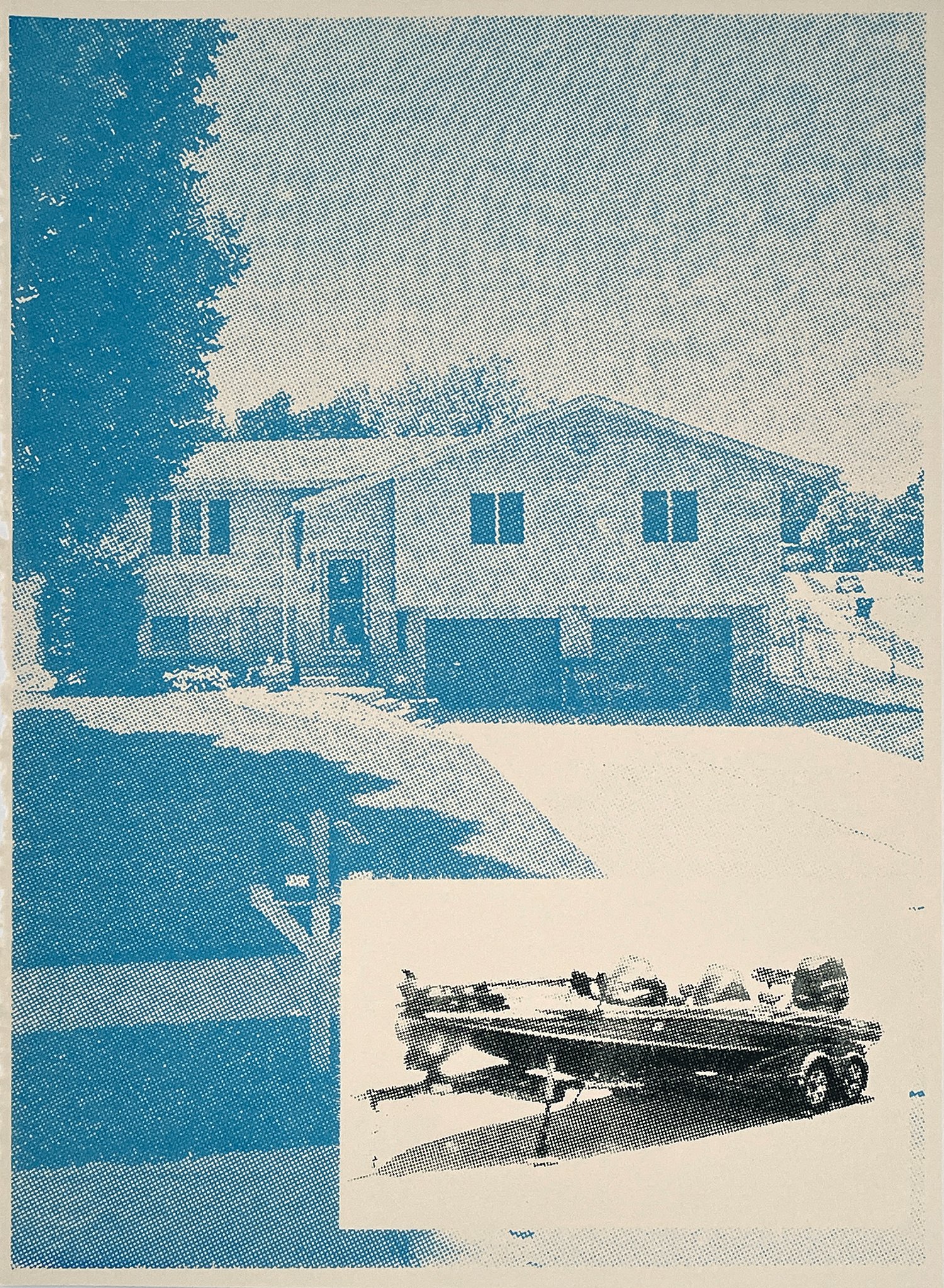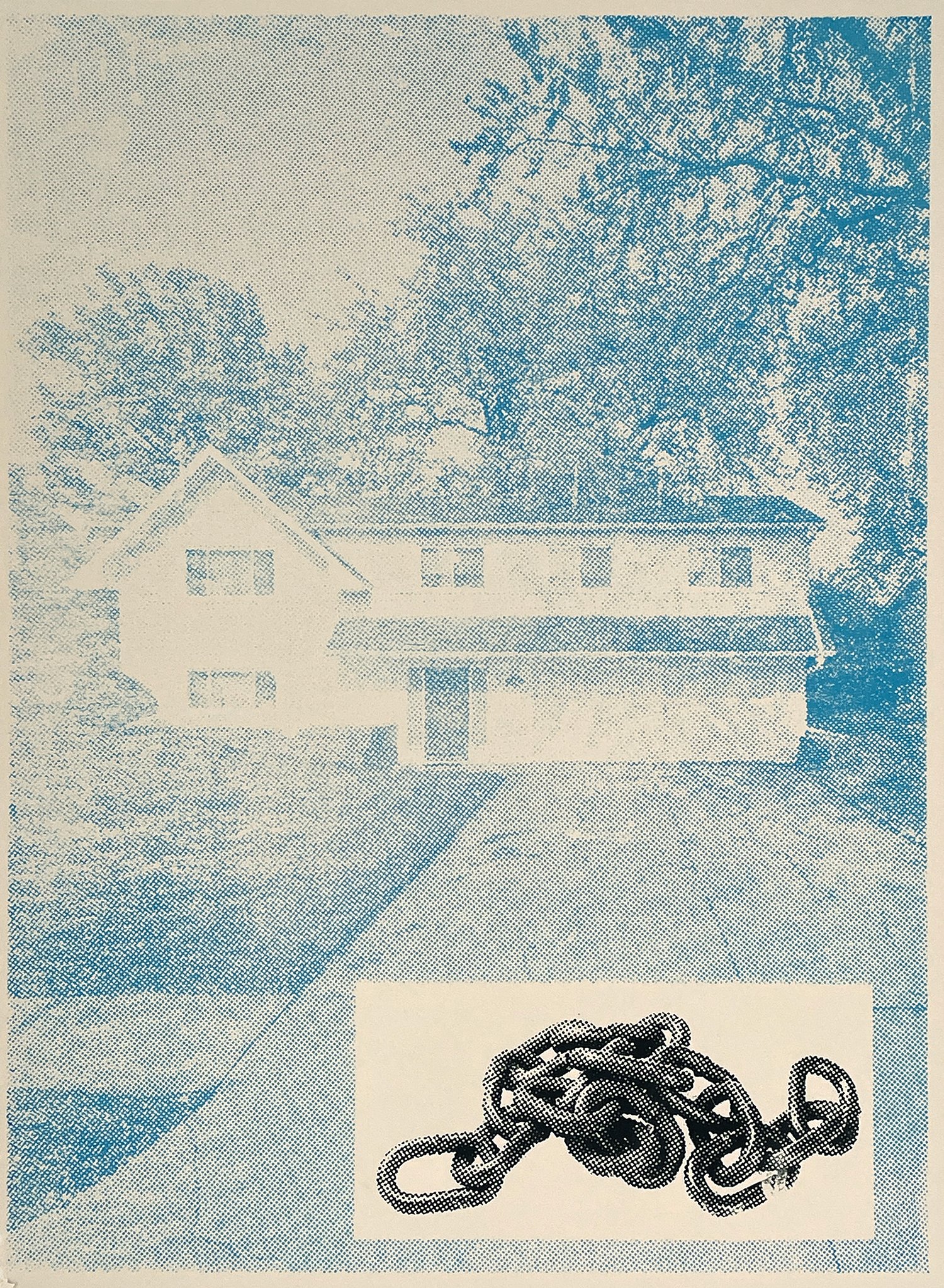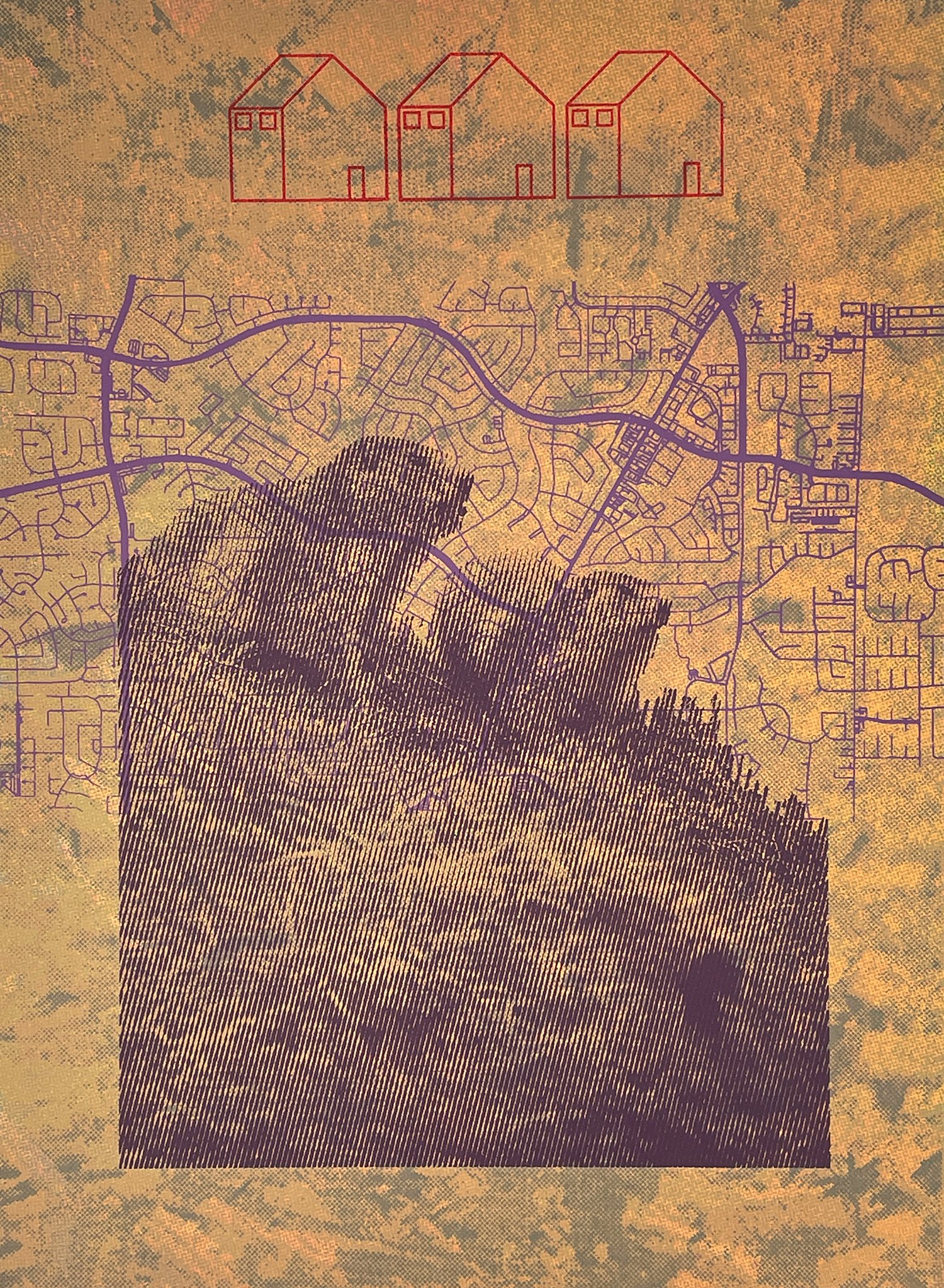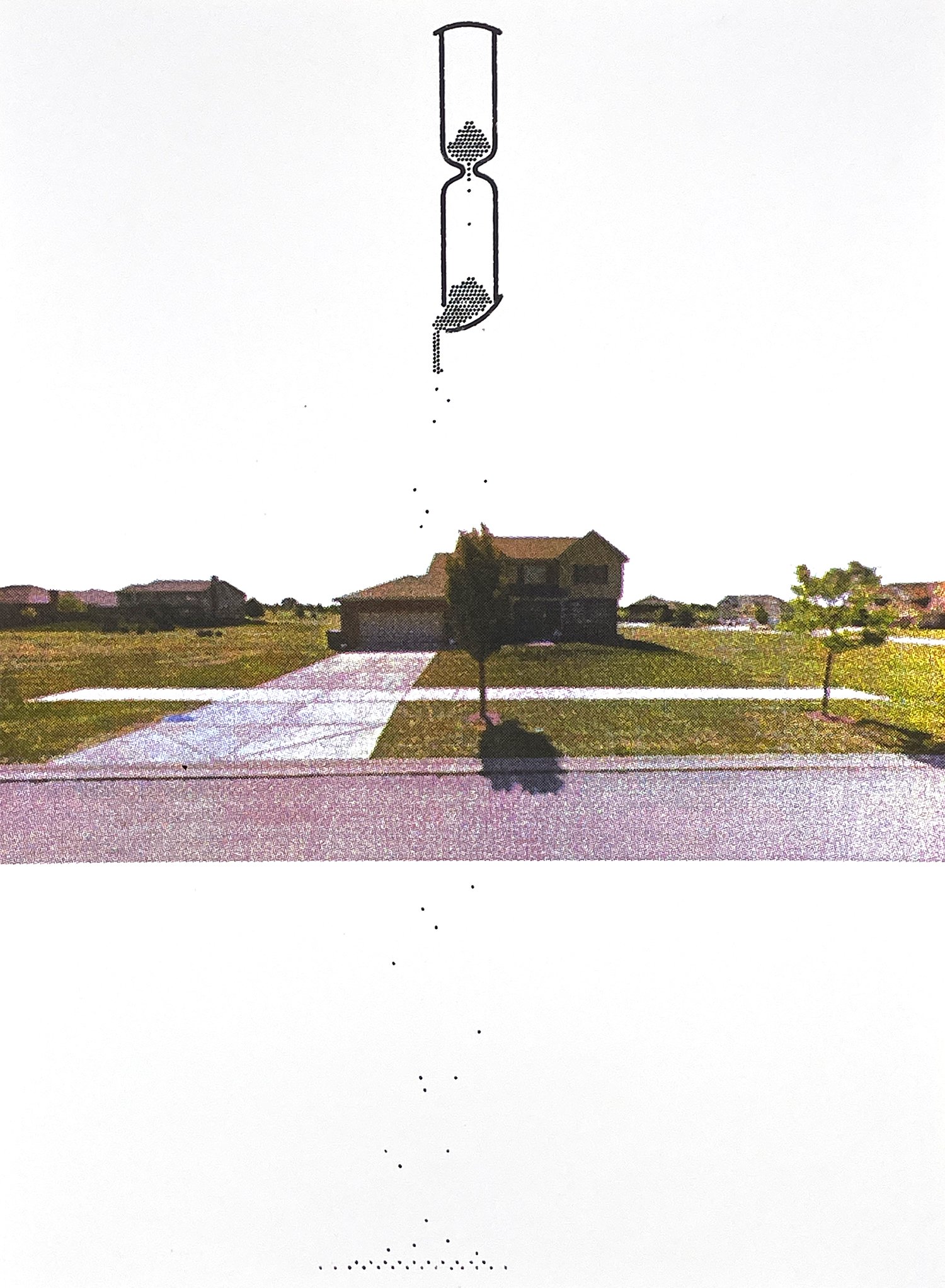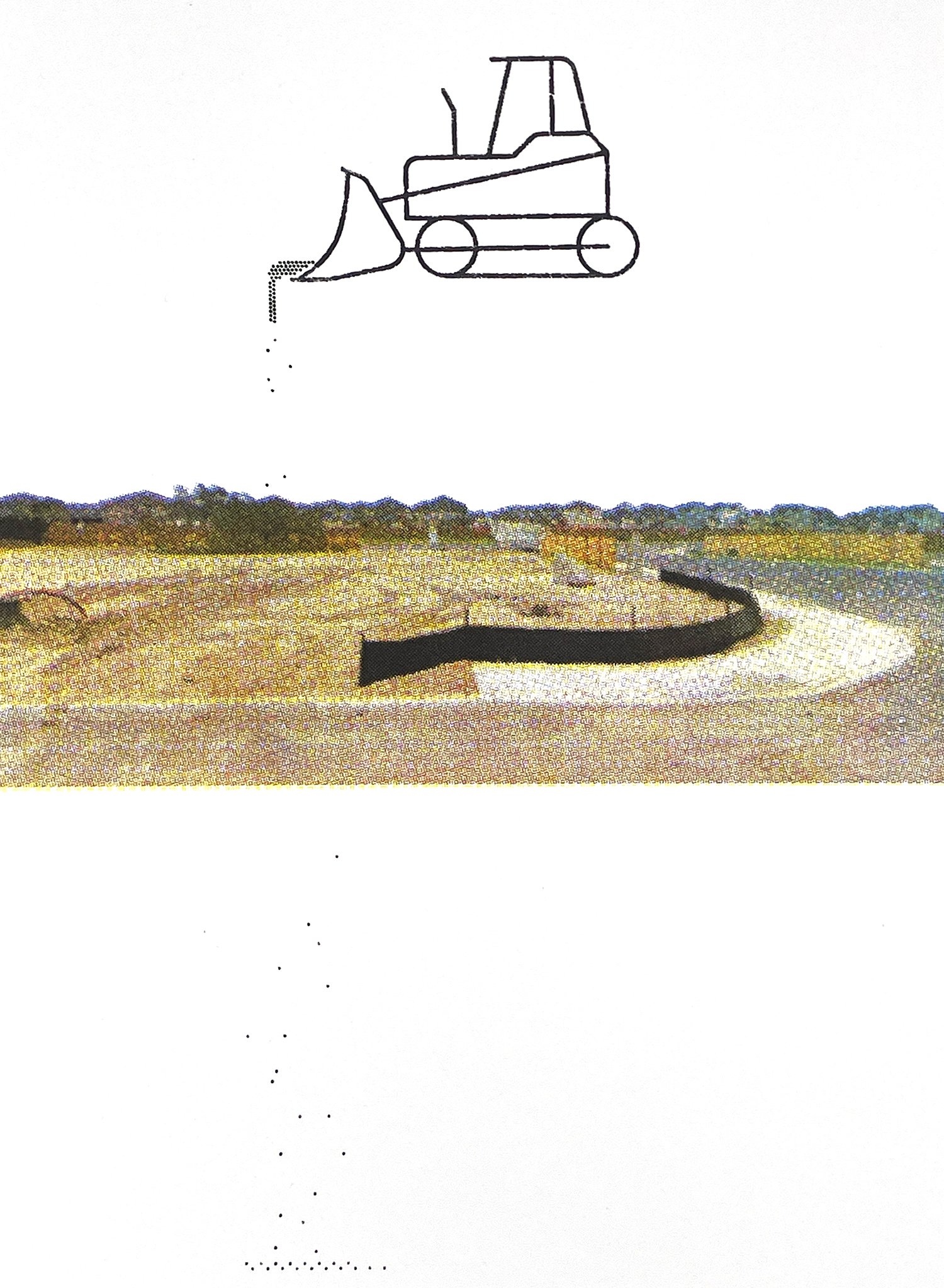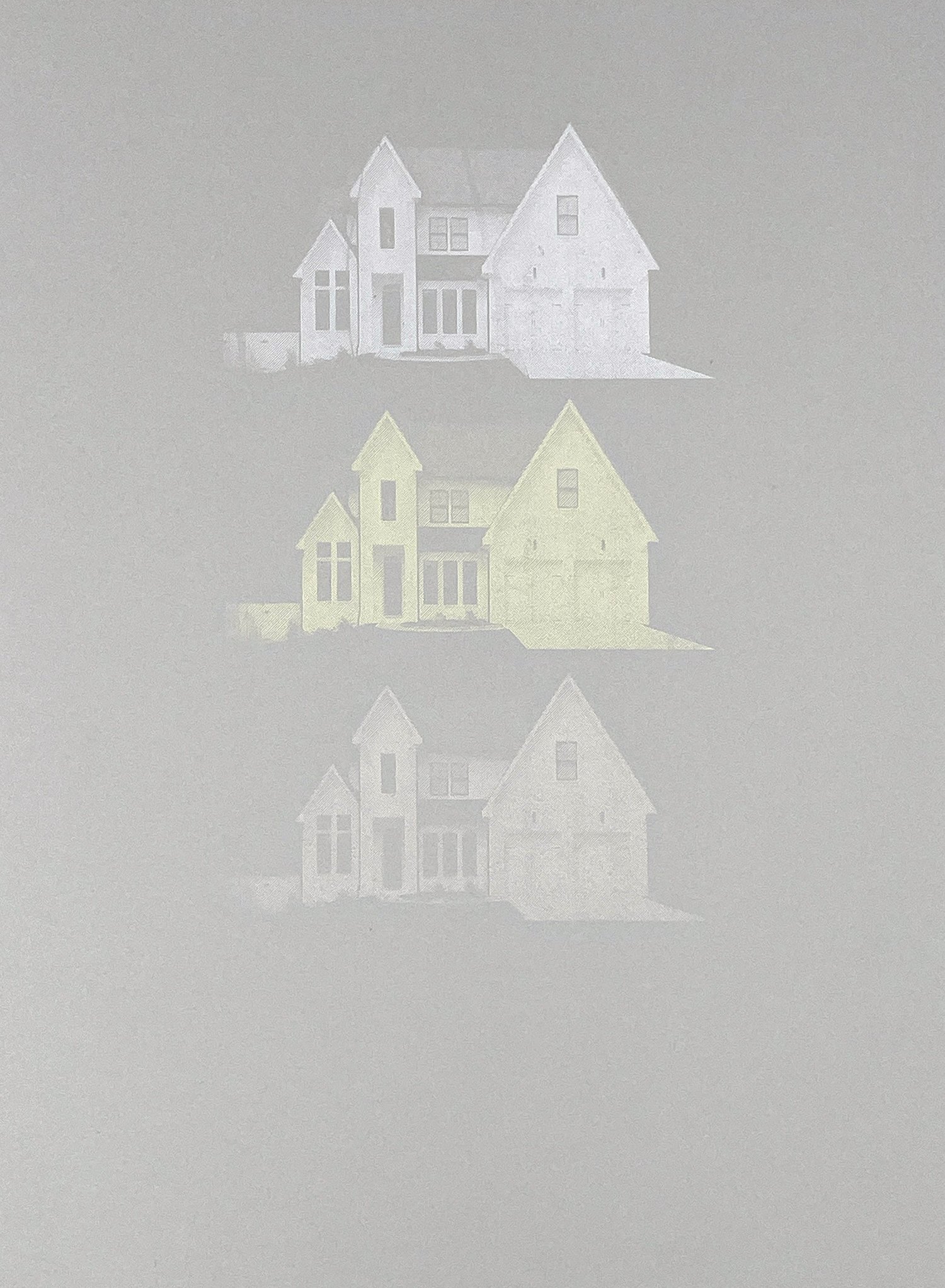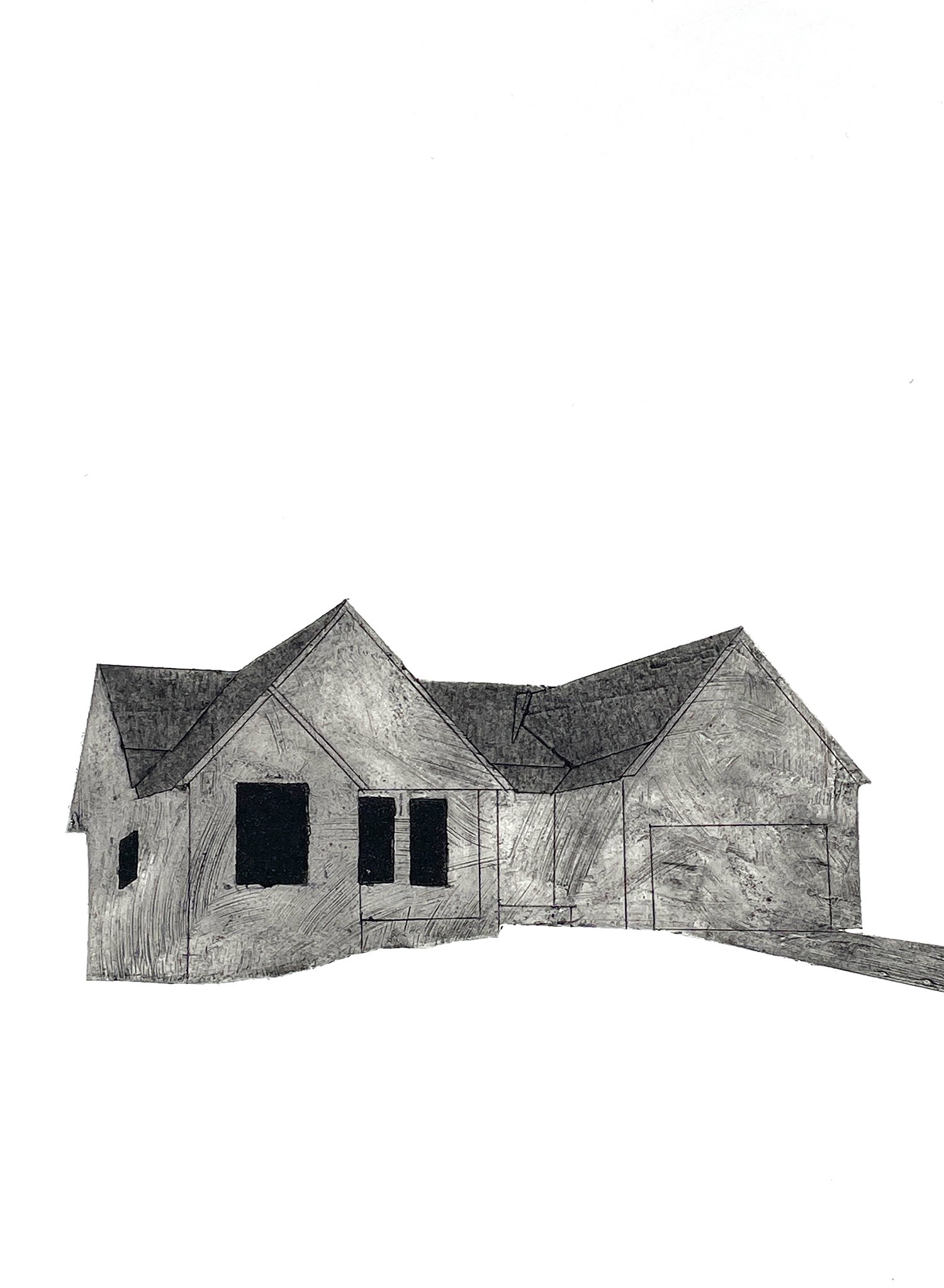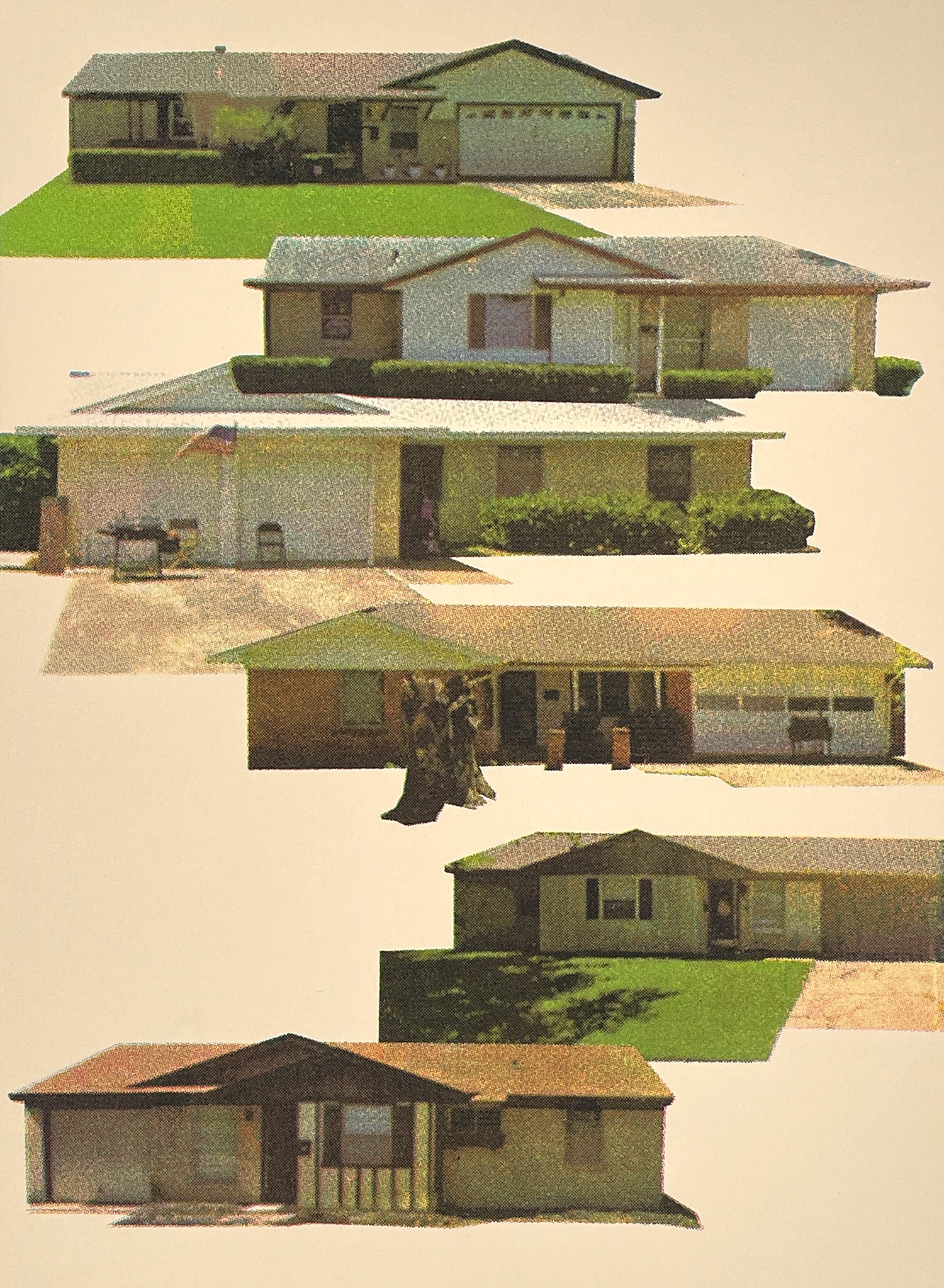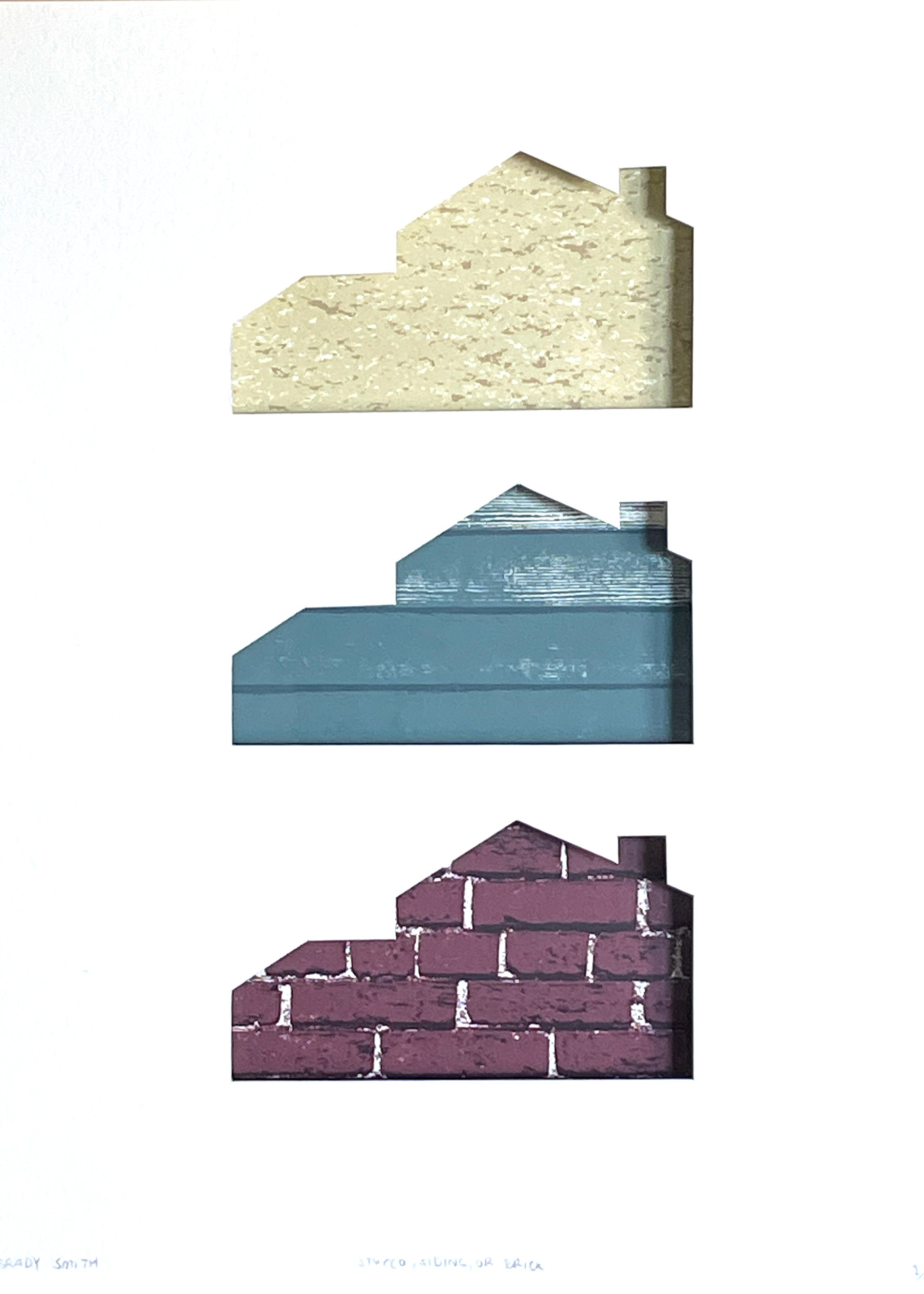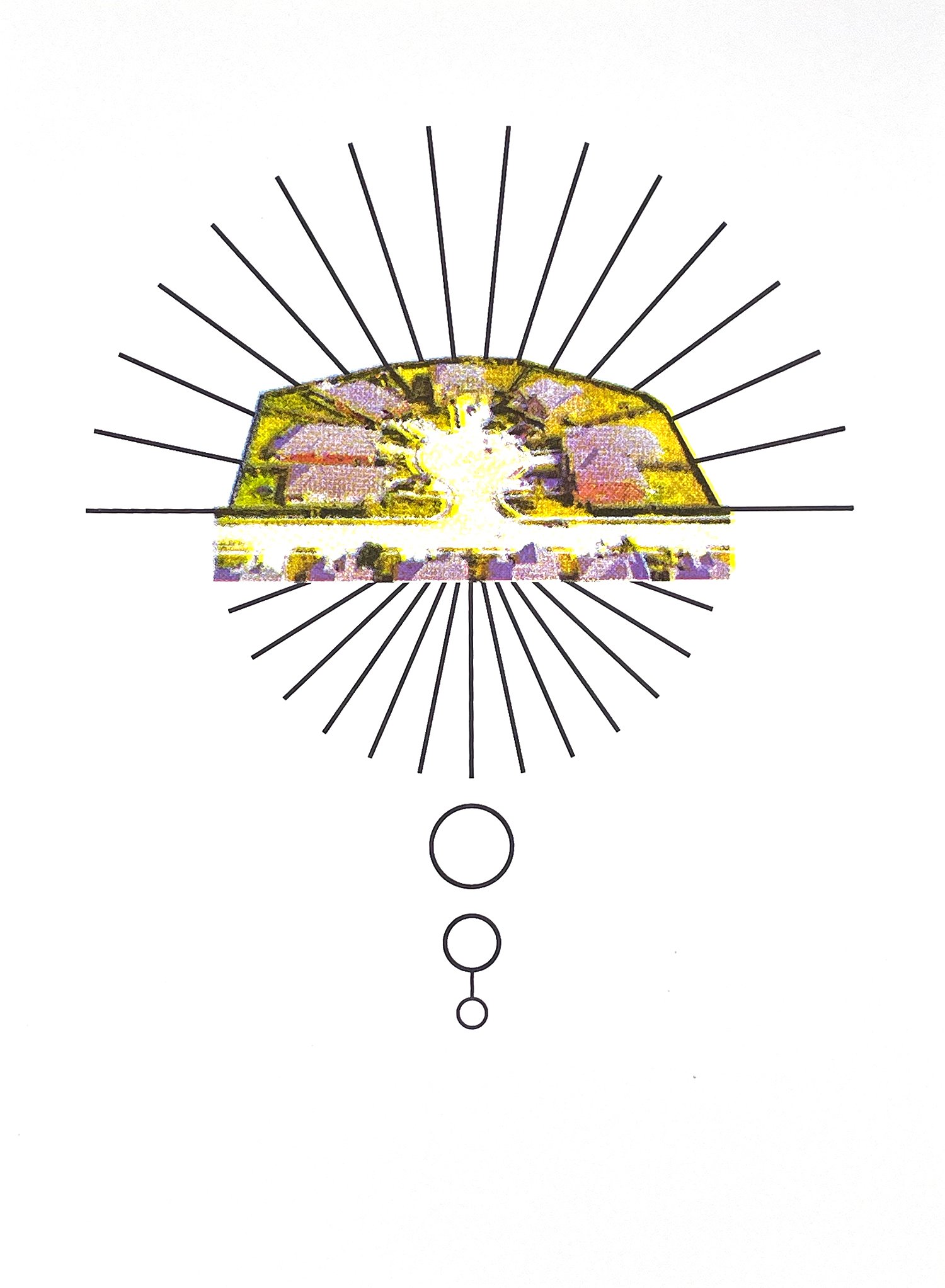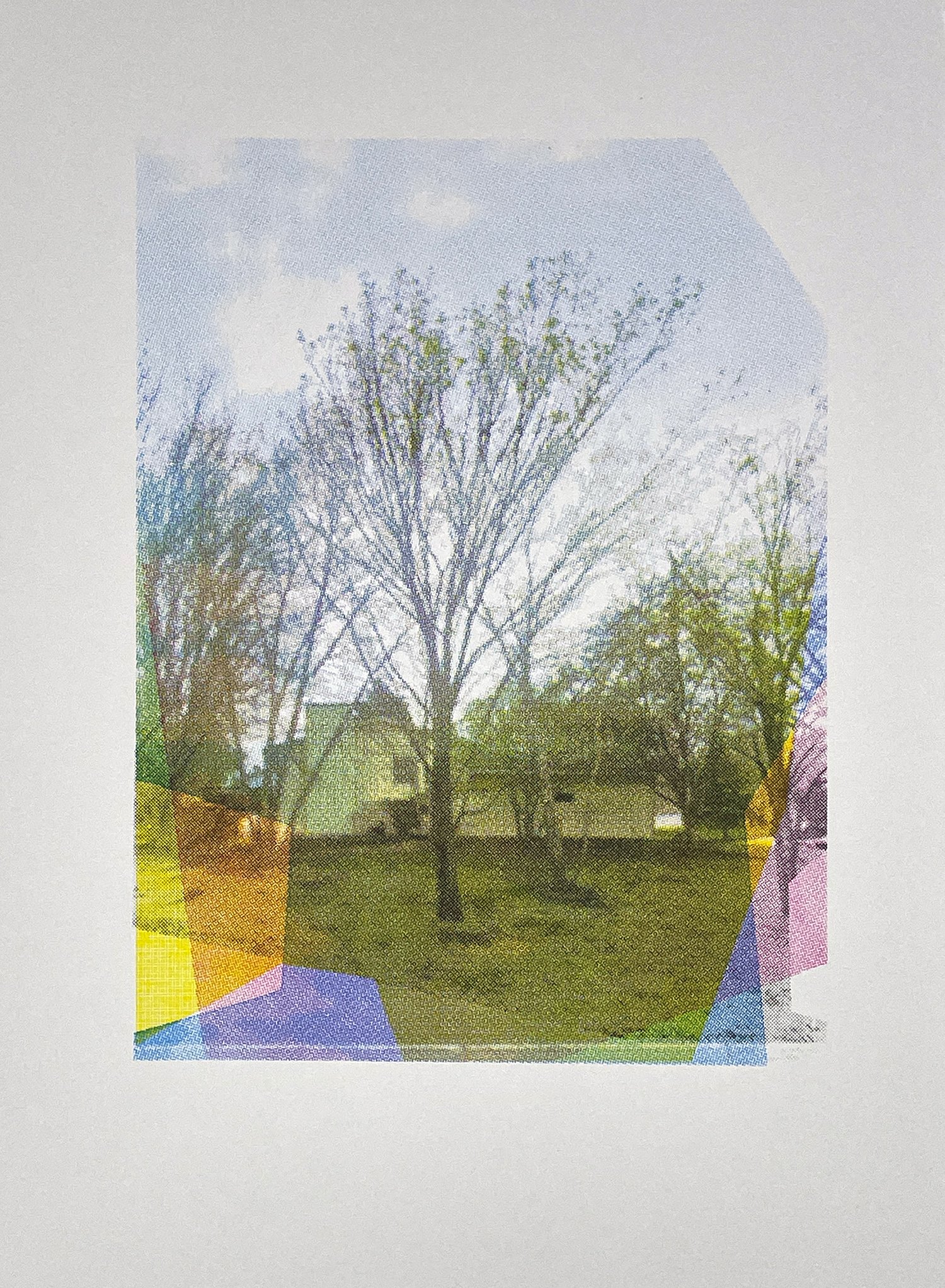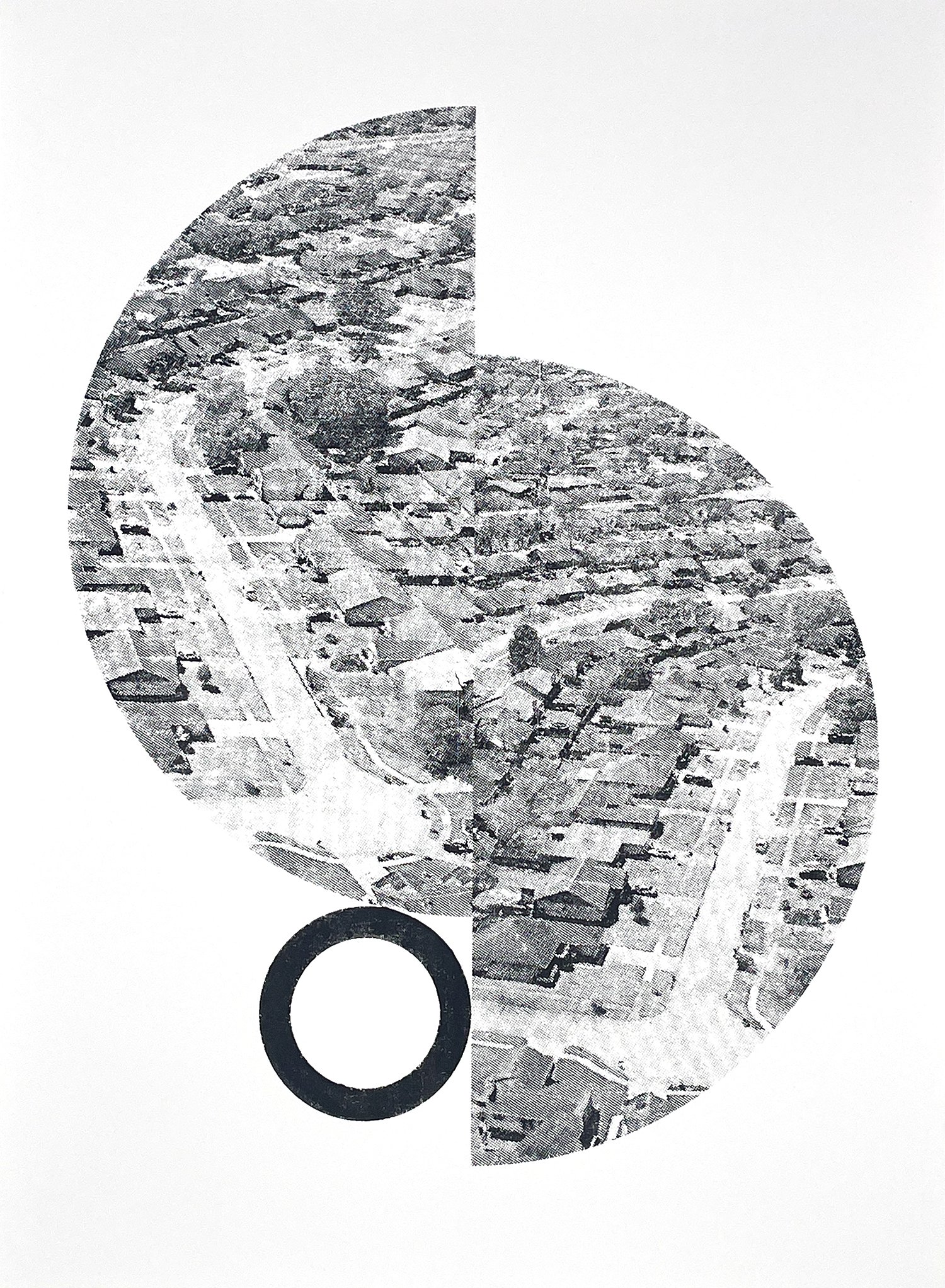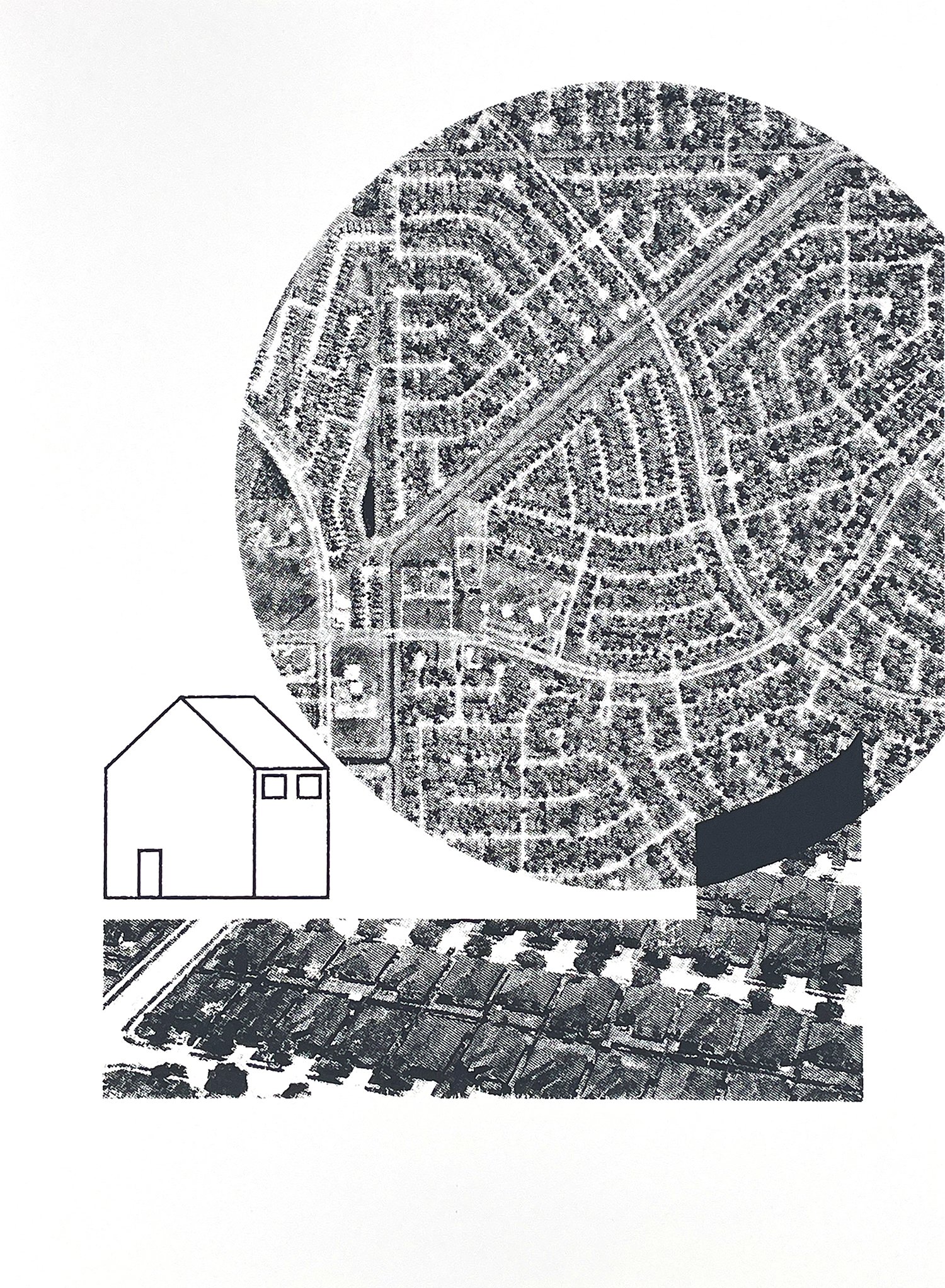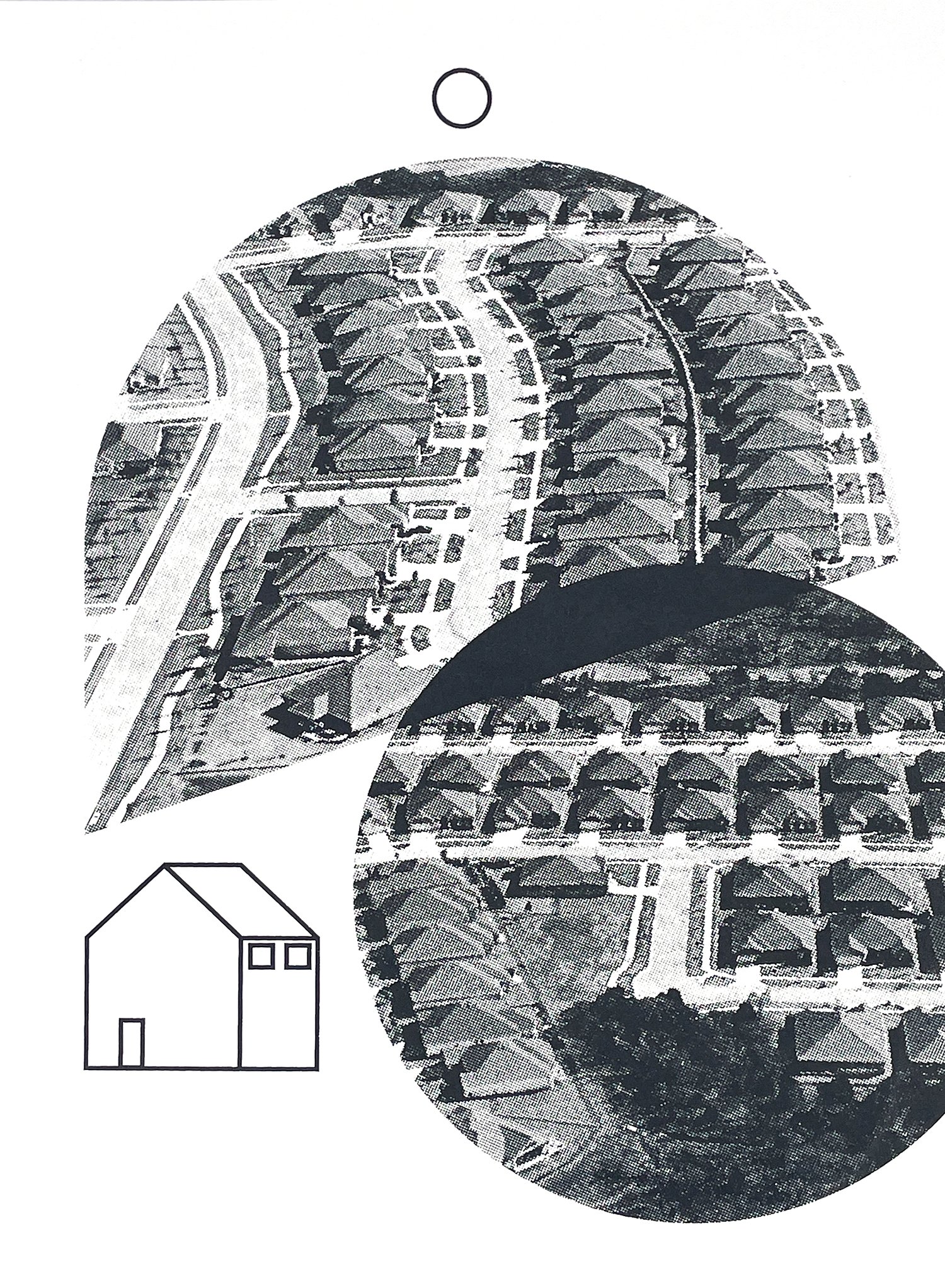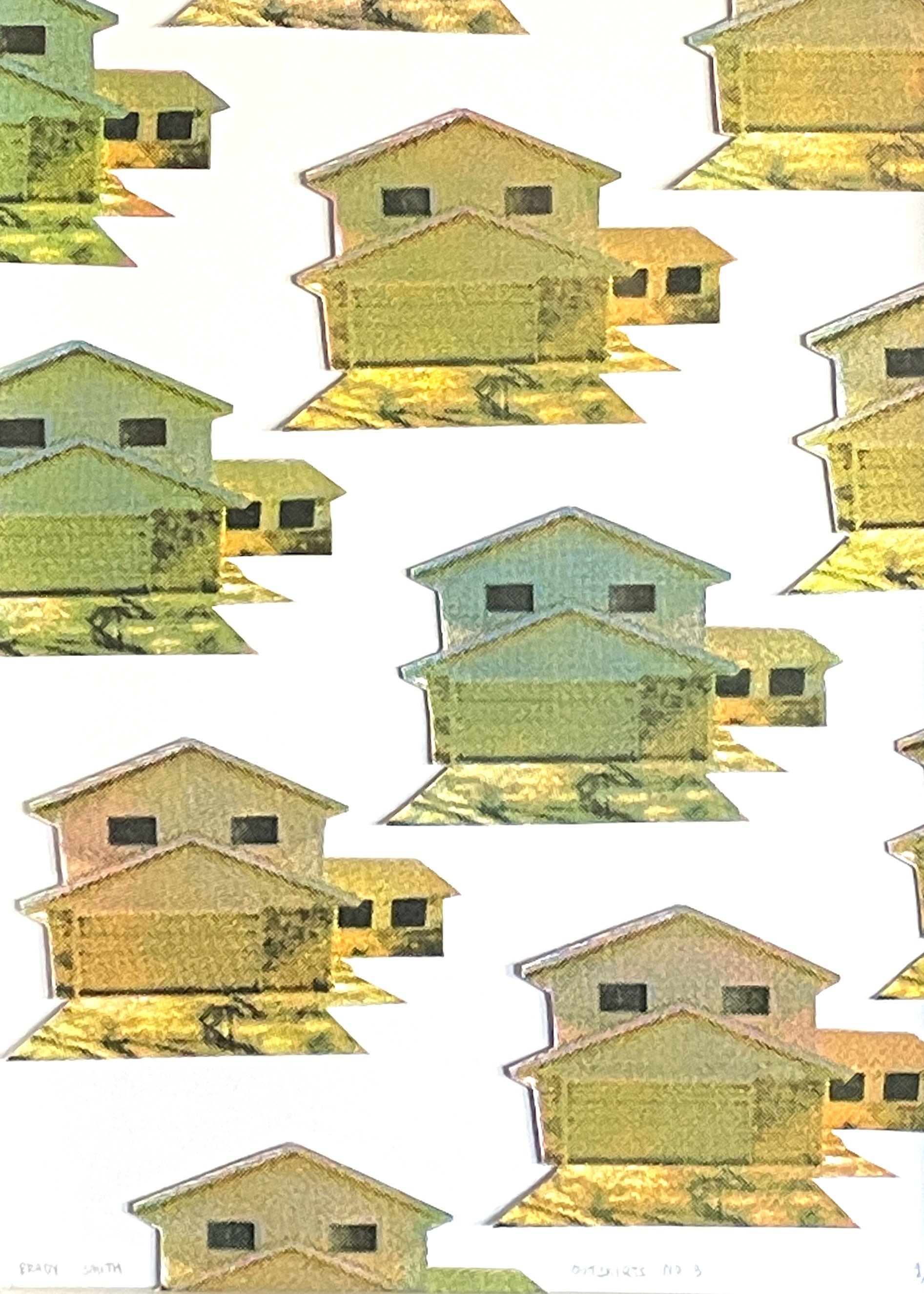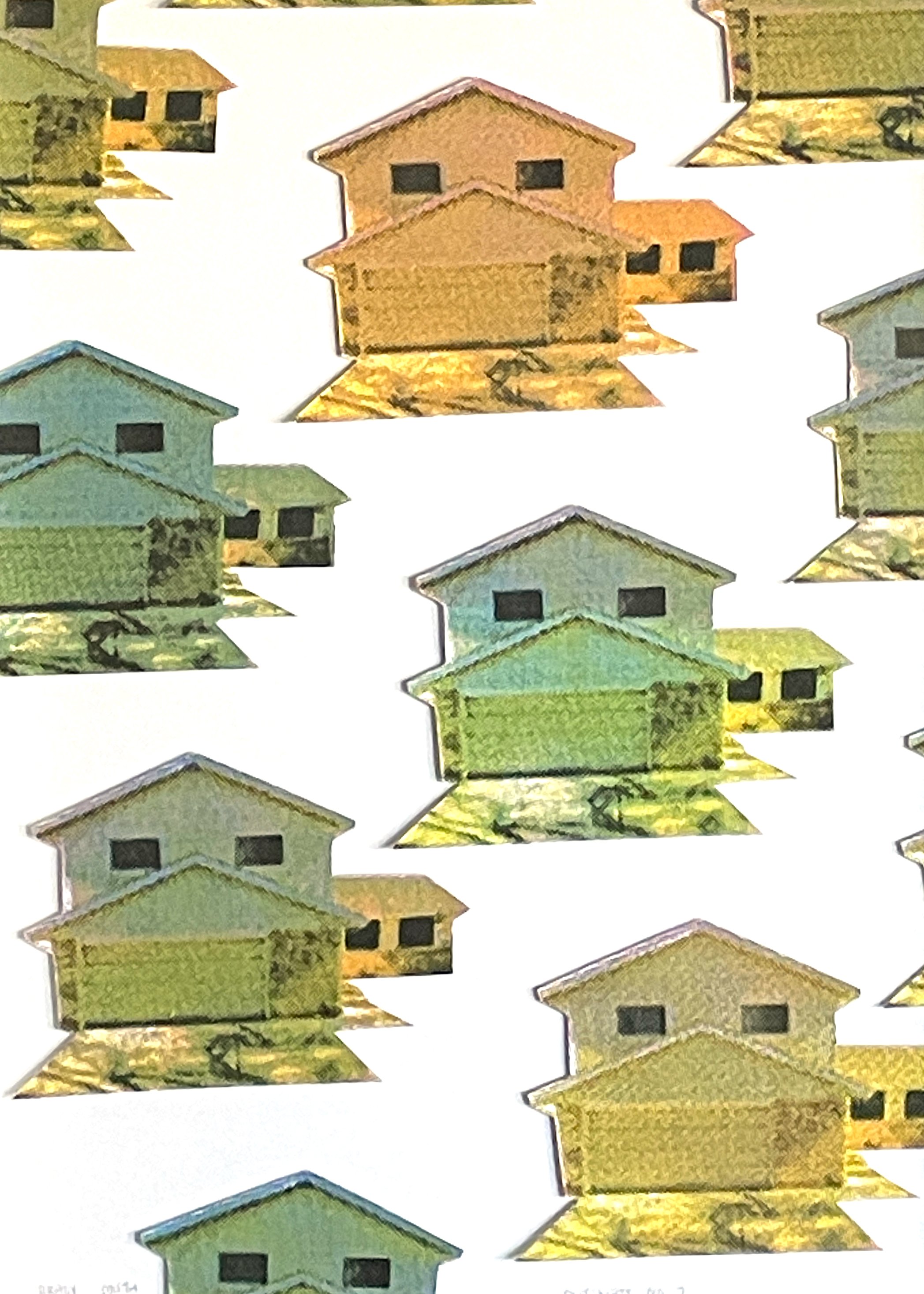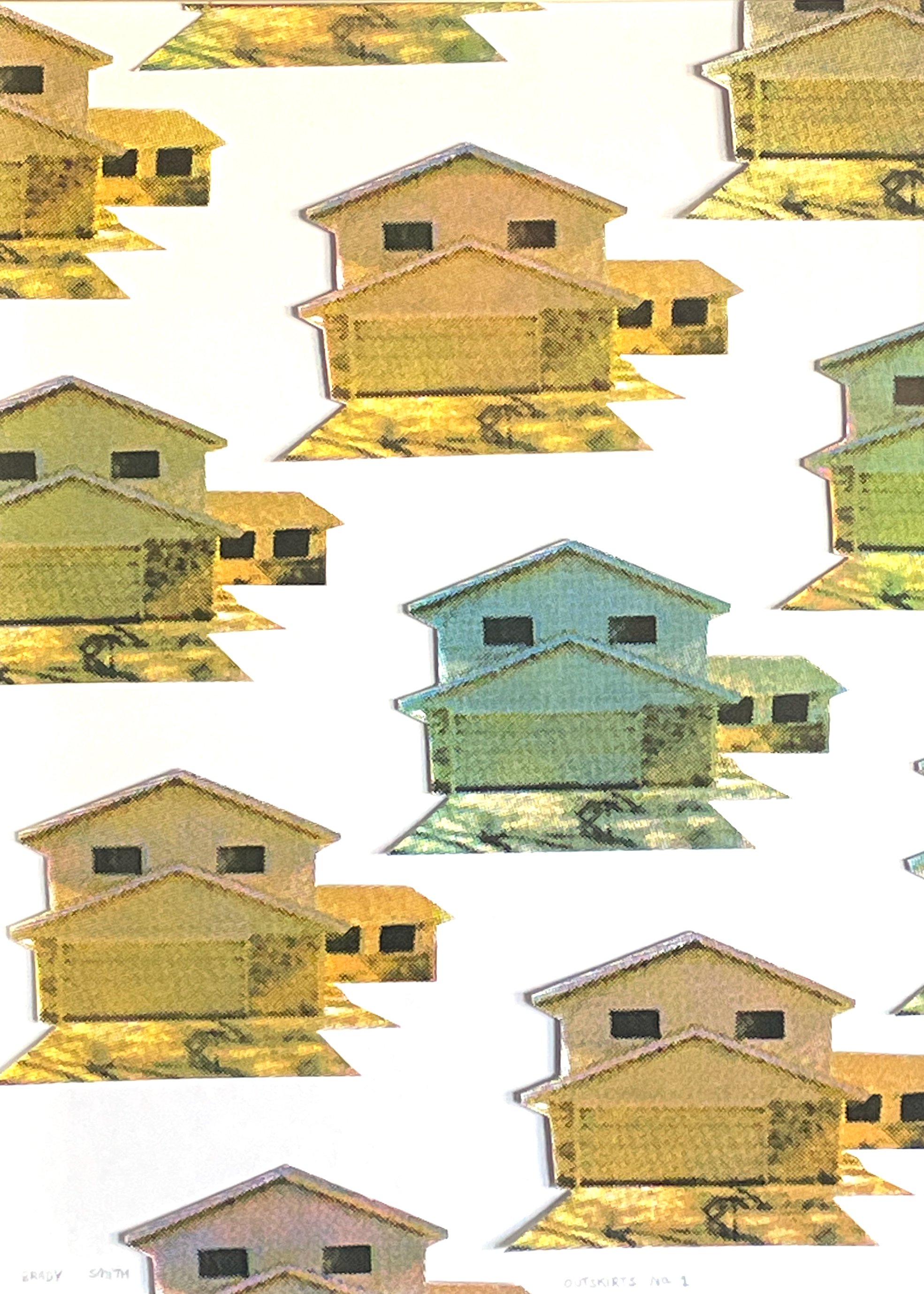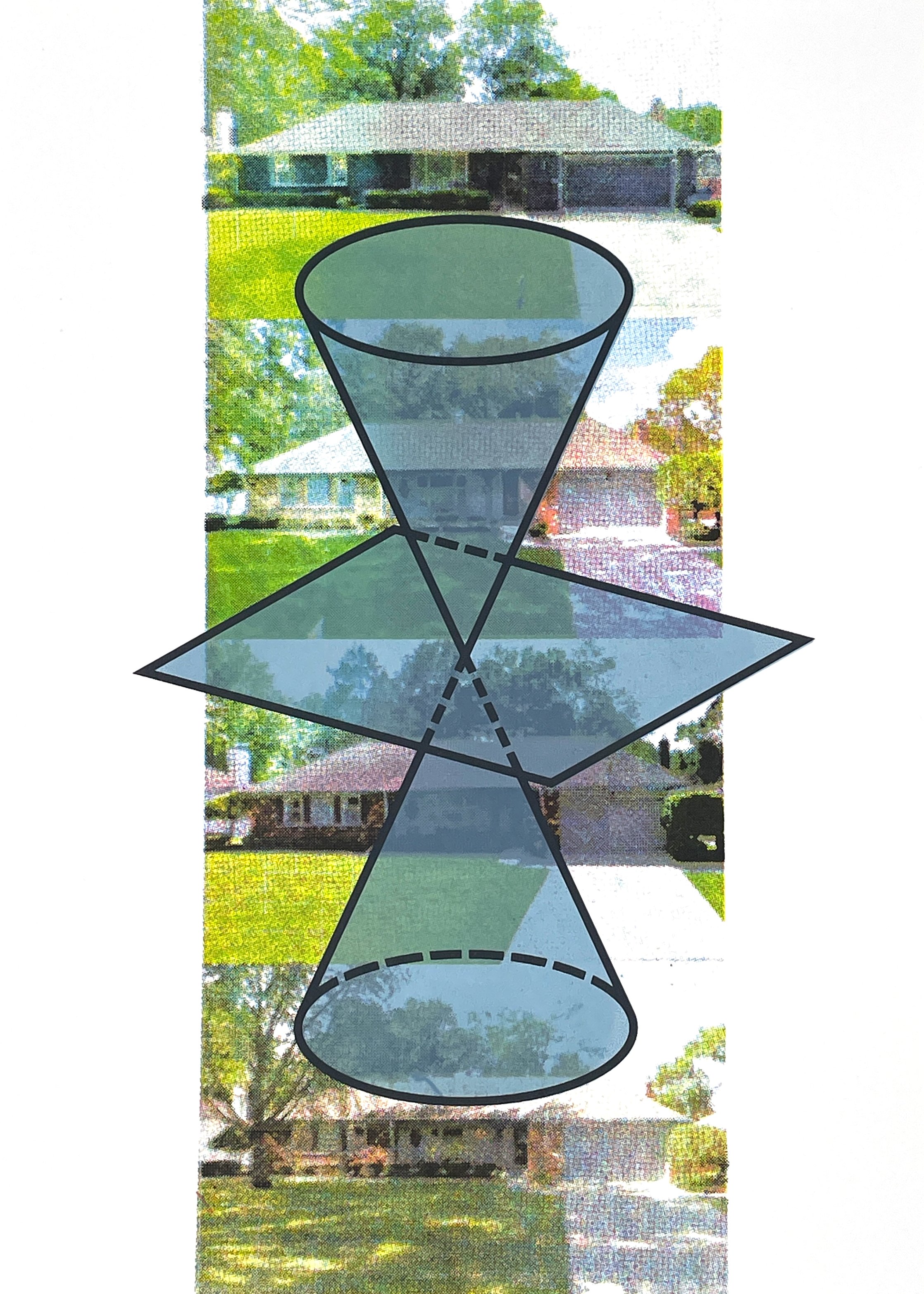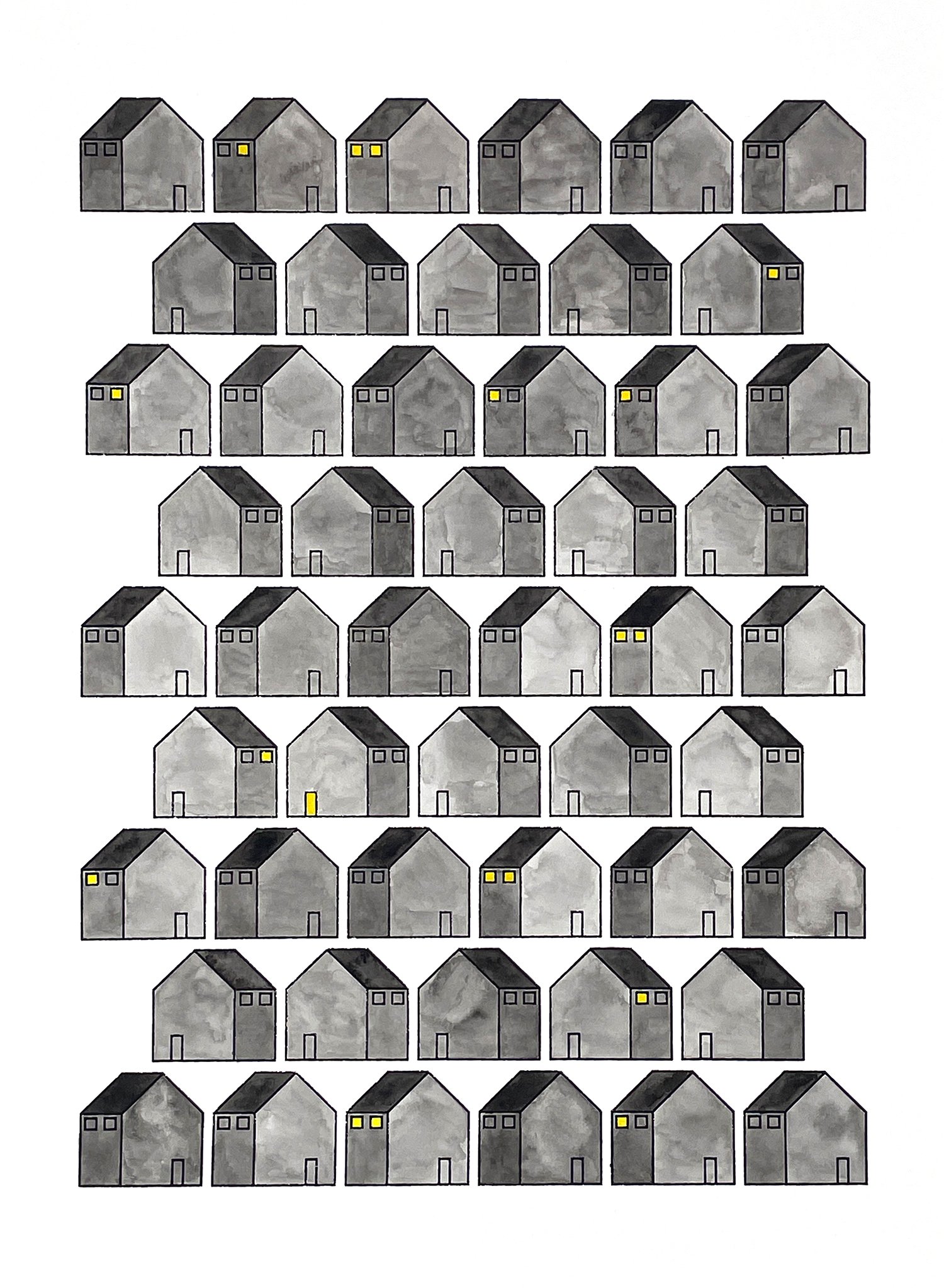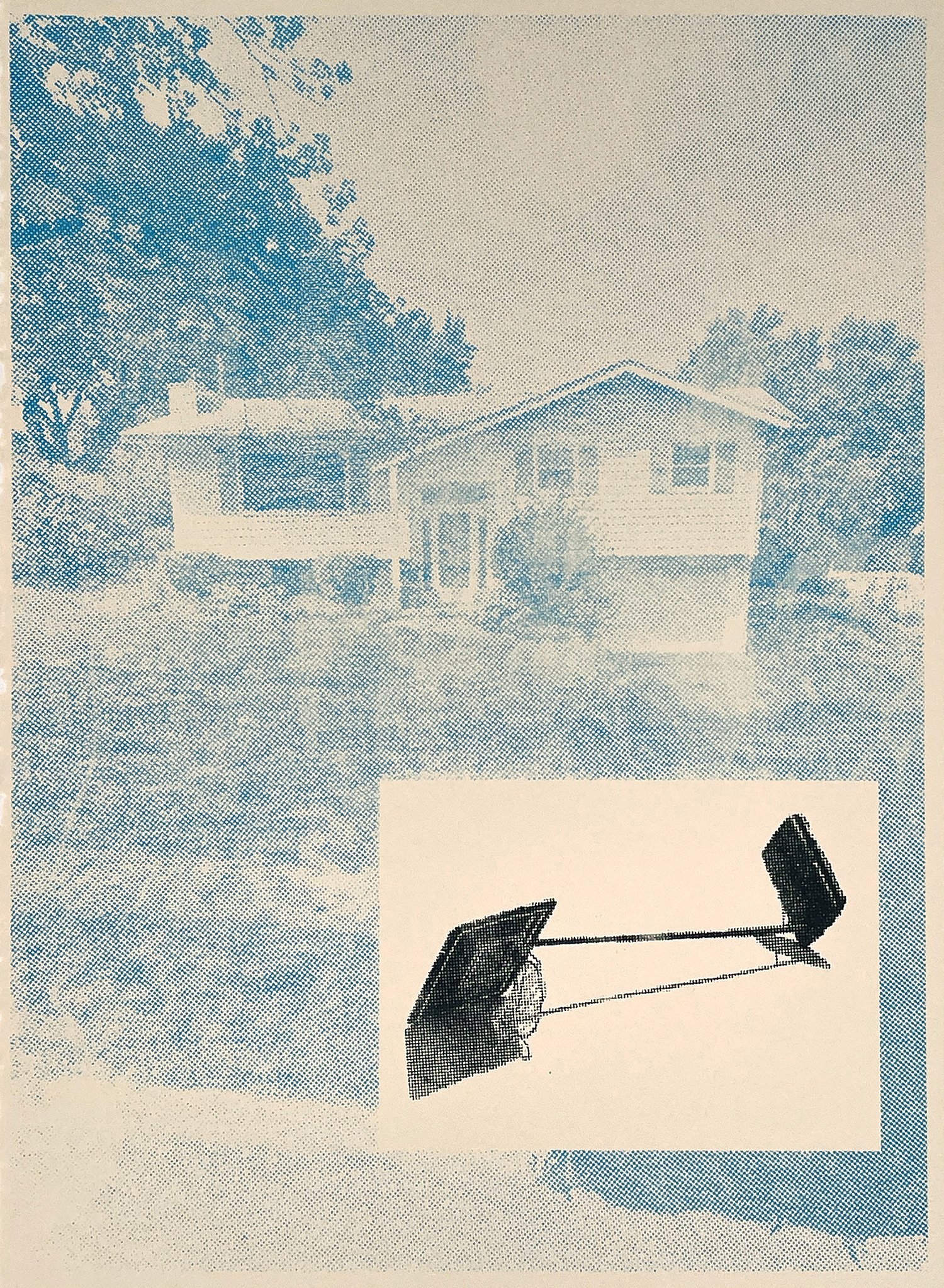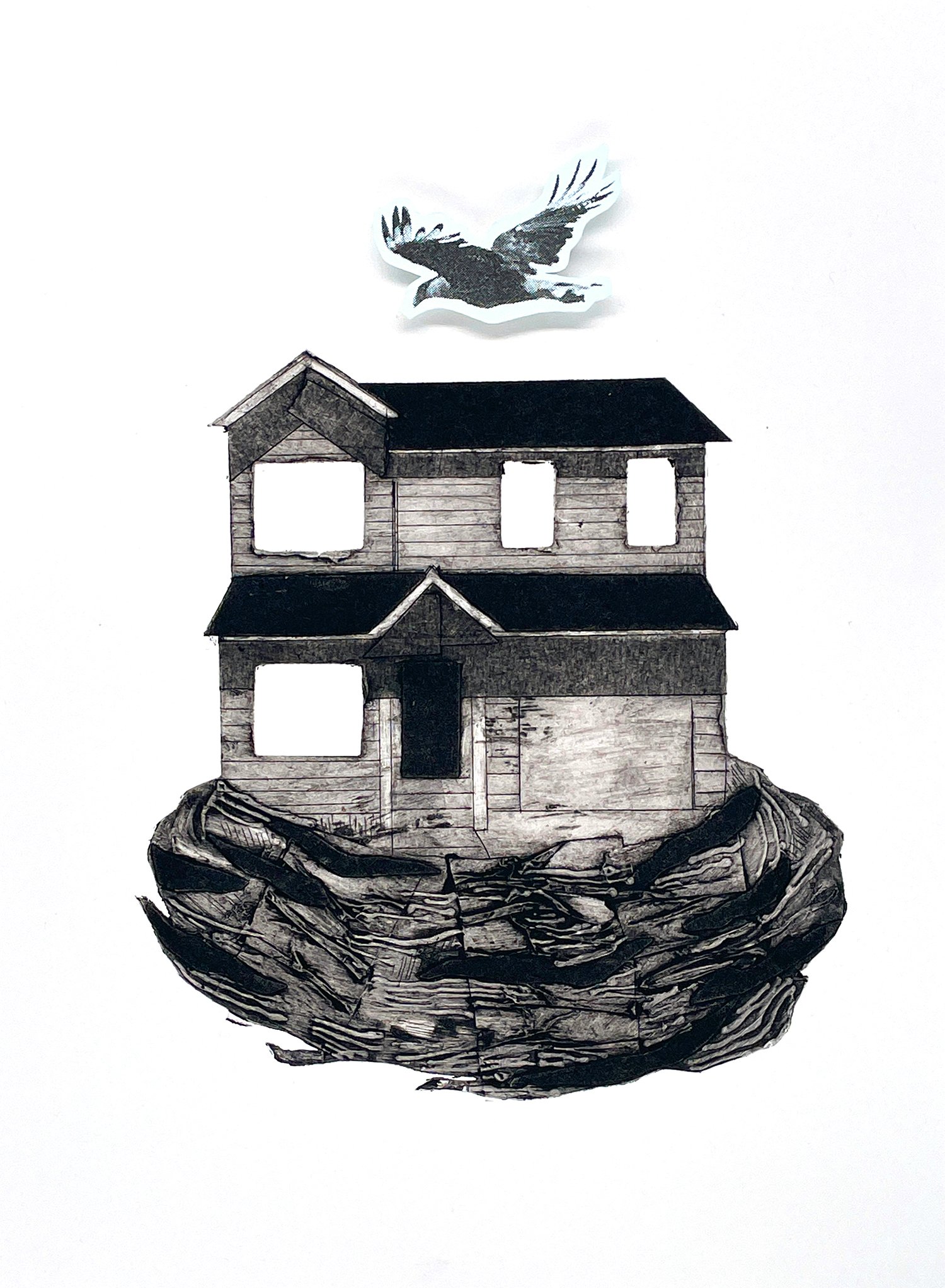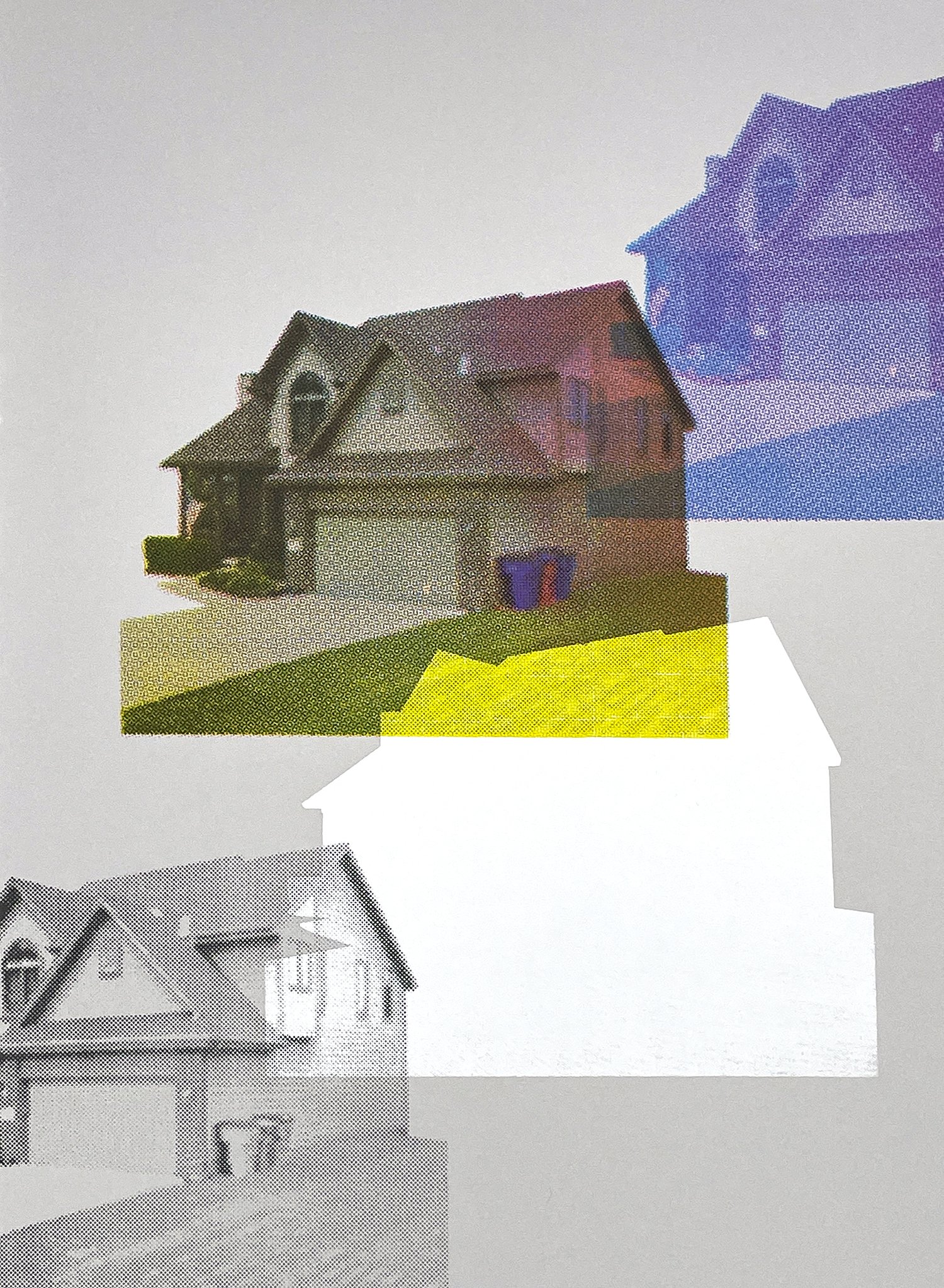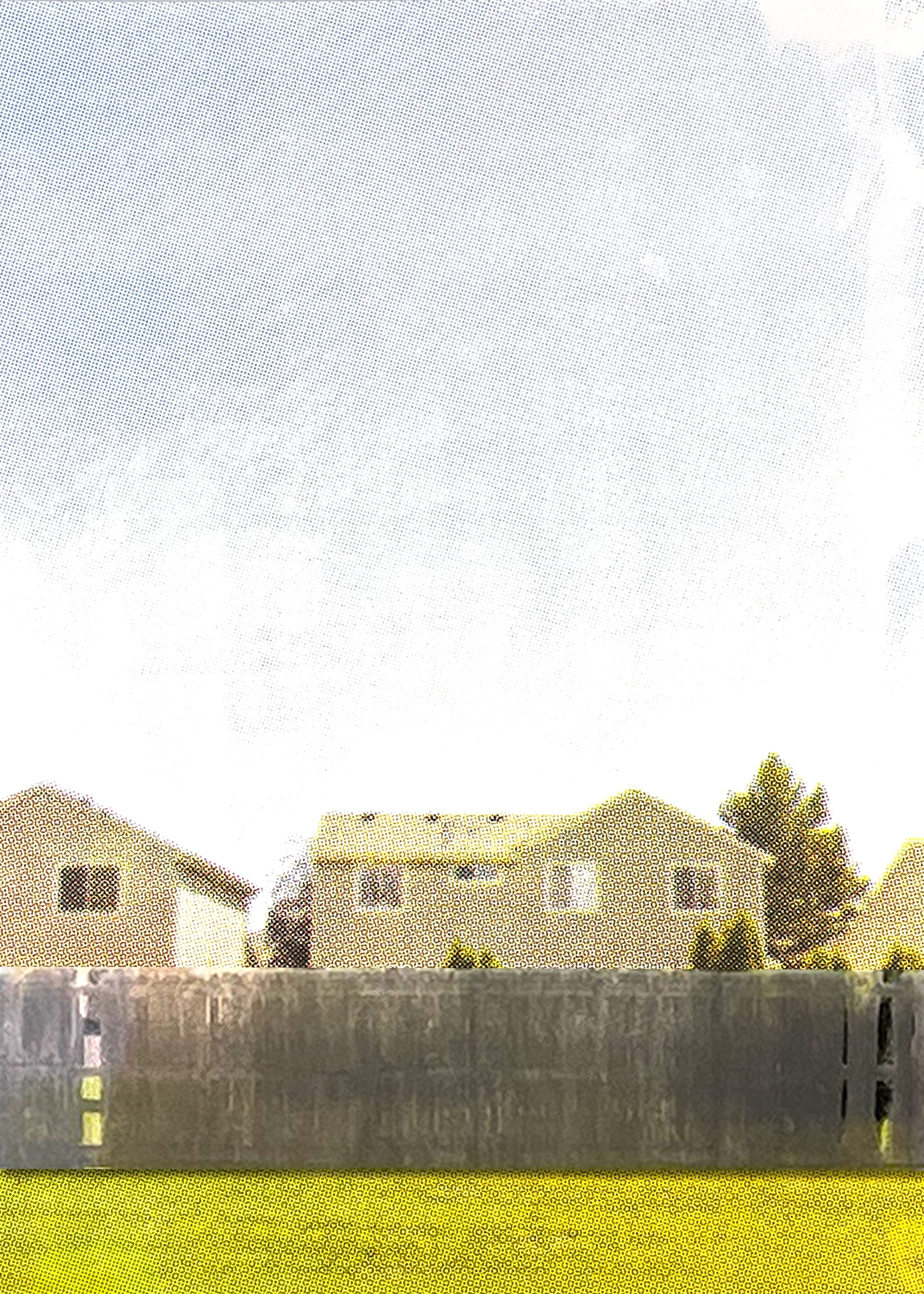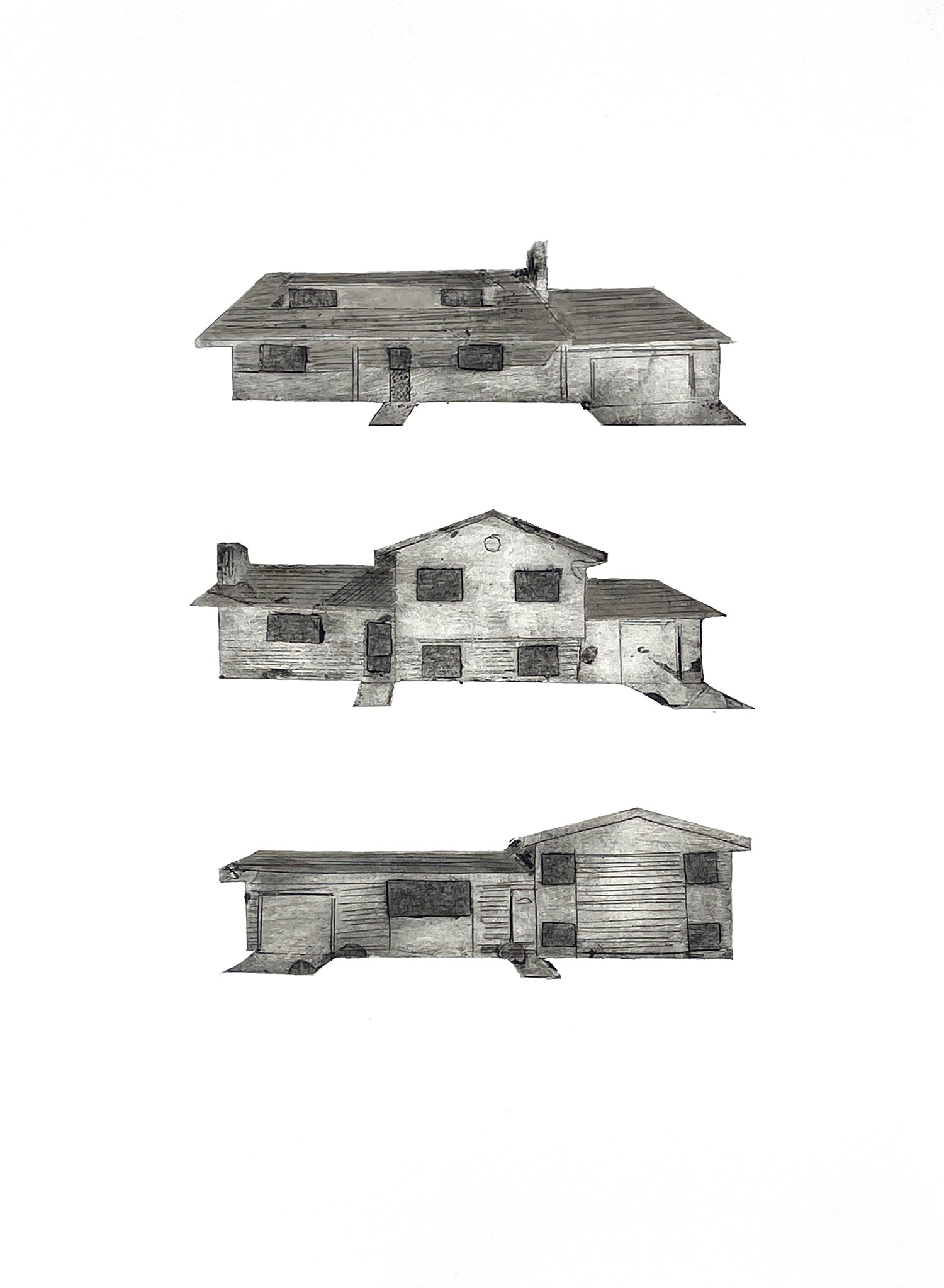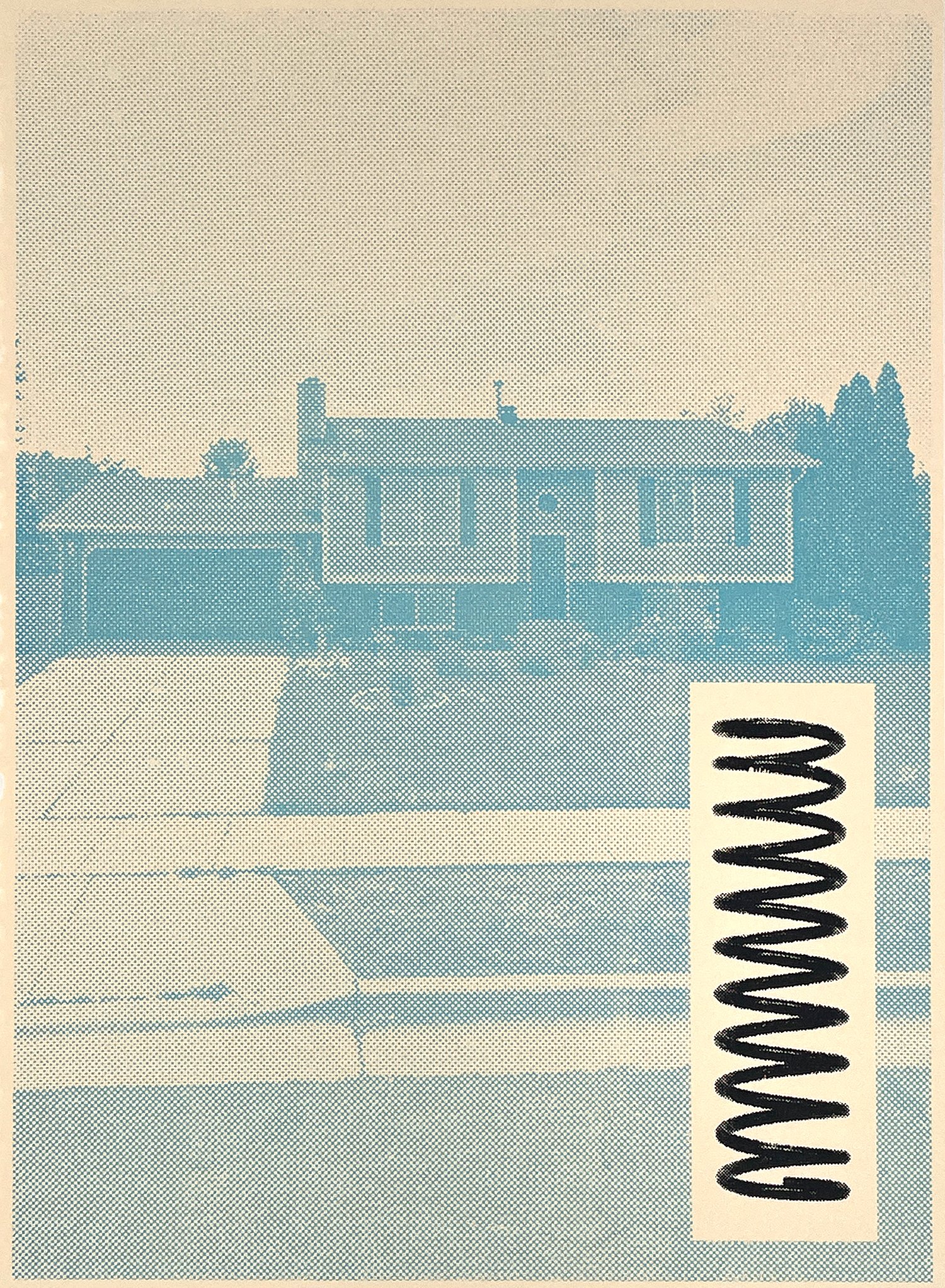5,000 sq. ft., 3 Car Garage
5,000 sq. ft., 3 Car Garage is a love letter to the suburbs, and more specifically, suburban neighborhoods. When I first told people about this body of work, I quickly learned that I need to clarify that this is a love letter. Despite a quarter of the American population living in the suburbs, there is a common dislike and othering of the suburbs. While I understand some of the criticisms, particularly with the role of suburban development in early racial segregation, I find contemporary critiques of suburban neighborhoods to be misplaced.
This exhibition aims to mimic the action of walking down and back a suburban street. Starting at one end of the gallery, you view and observe each piece sitting in its own plot on the wall. After viewing half the show, you then experience the same work in reverse order, each piece mirroring the work seen prior. The reverse repetition of an out-and-back walk down a suburban street offers the opportunity to find new details in the so-called banal, monotonous houses. And much like a suburban neighborhood, some works in this show are repetitions of one idea, while other pieces are their own, standalone concept.
The printmaking methods in this show – screenprint and collagraph – were chosen for their impossibility of making mirrored images. The screen prints are mostly halftone, many of which are in CMYK, which is well known for its reproducibility in commercial printmaking. My inexperience with the medium, however, made it impossible to perfectly reverse and mirror the image, highlighting the differences within the repetitions. The collagraphs were made by creating the same image on both sides of a singular matrix. The plates were then printed simultaneously in the press – sandwiched between two sheets of paper – getting mirrored impressions in the same moment. Due to the challenges of proprioception (knowing where one’s body is in space), it was impossible to perfectly recreate the image on both sides of the plate. This again, led to highlighting the difference in the reversals.
Repetition, monotony, and sameness are inherent parts of the human experience, and difference is only understood through repetition. While the dense excitement of an urban environment or the open expanse of the rural are enticing, I invite you to think about and question your opinion of suburban neighborhoods as a landscape with its own merits.


